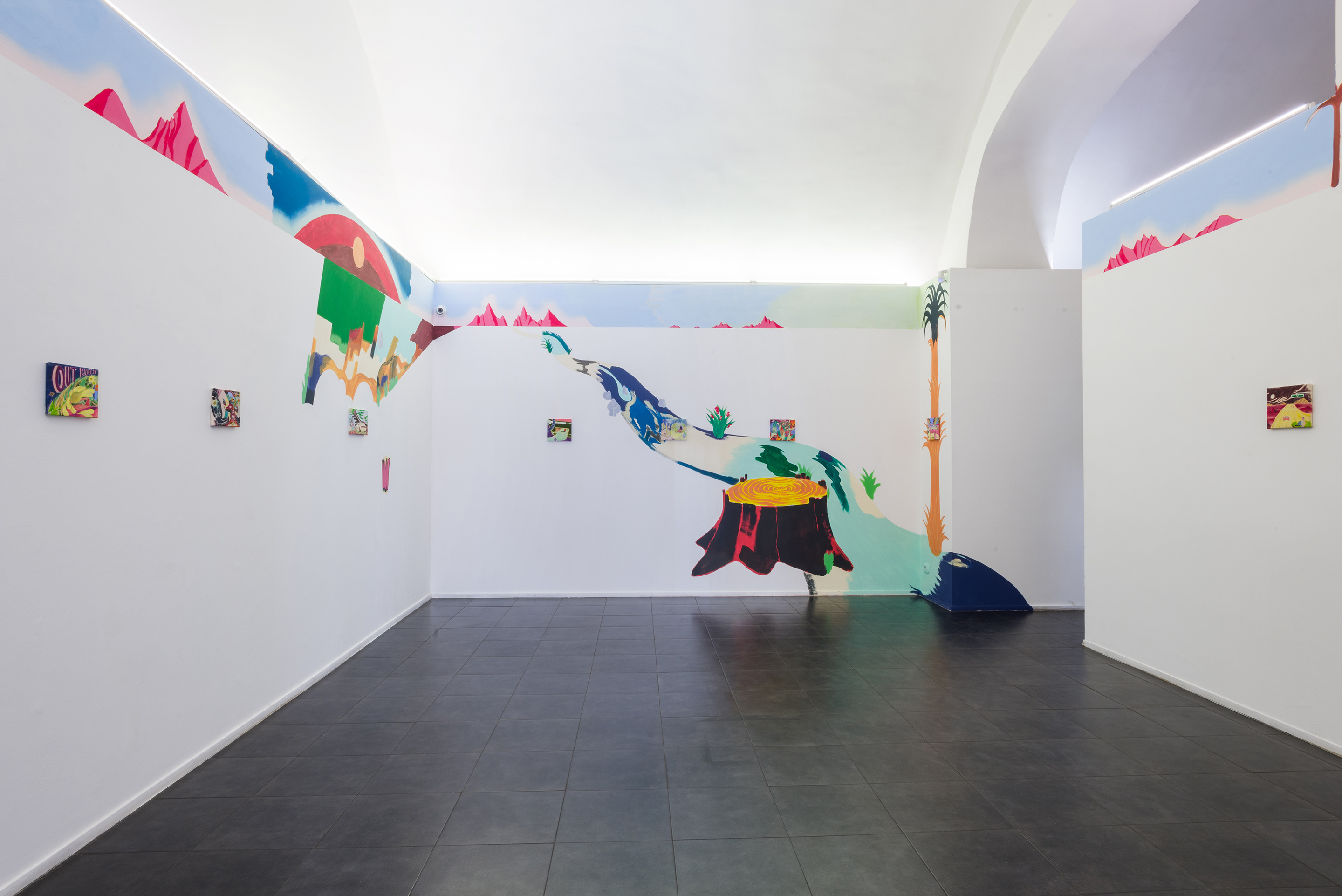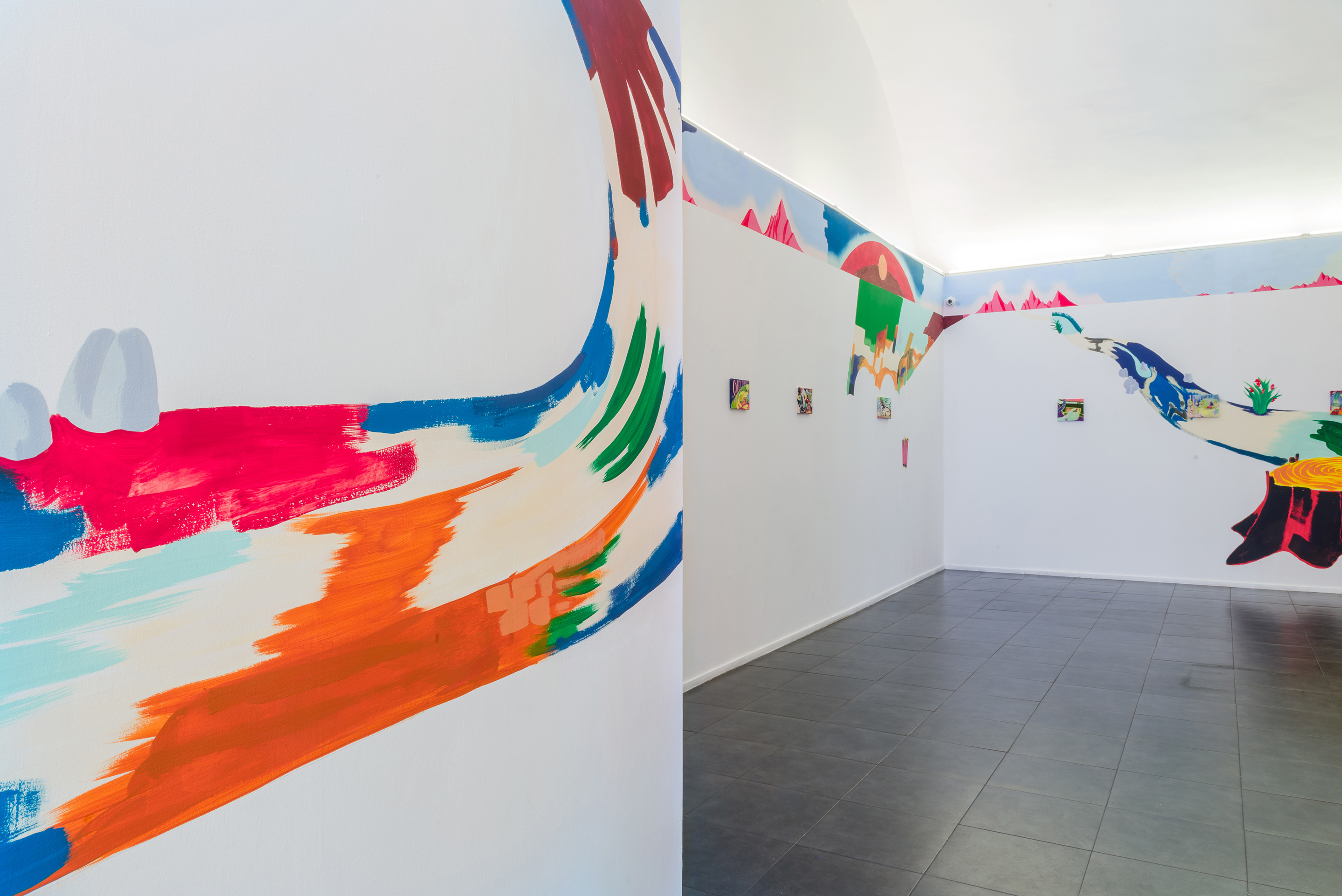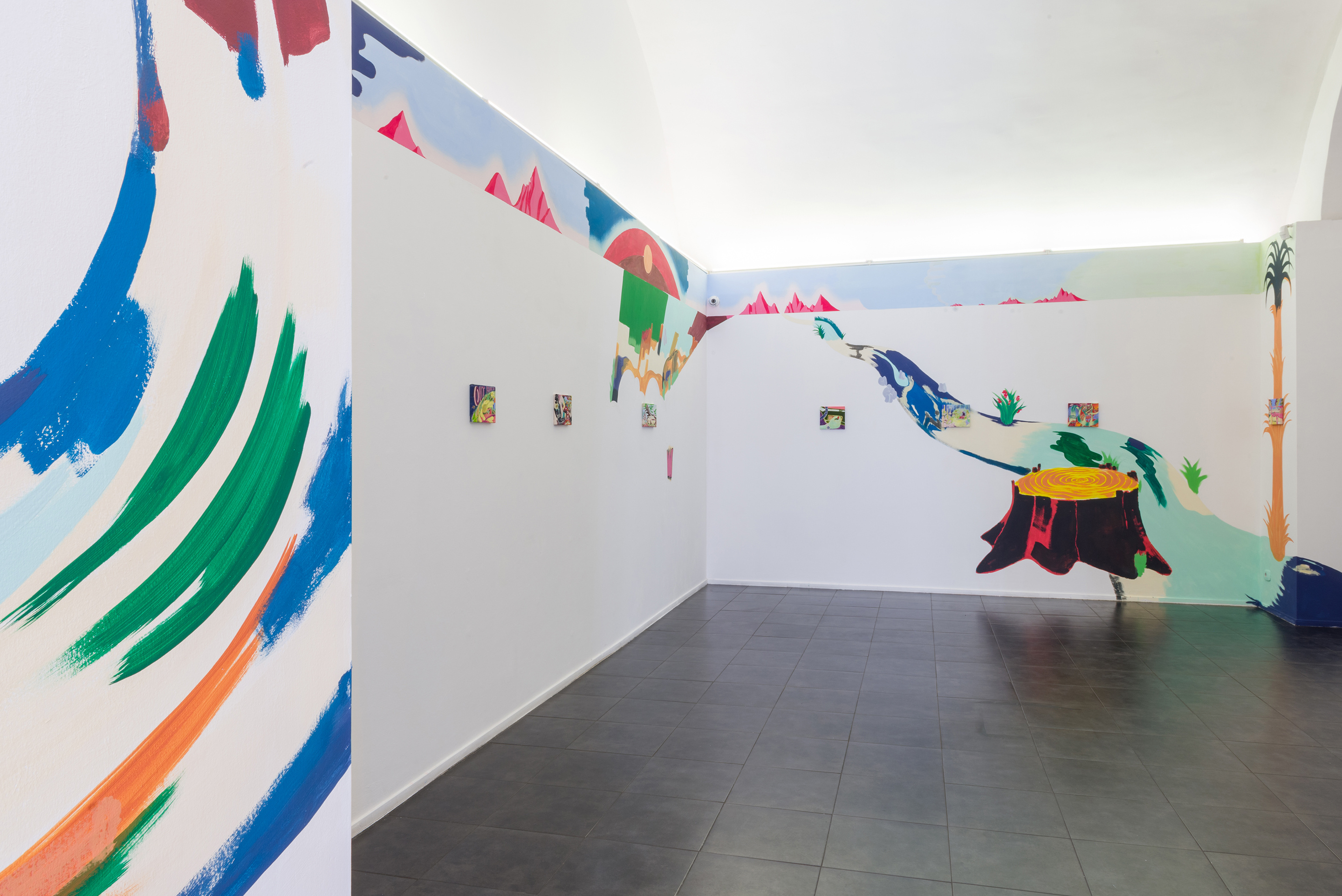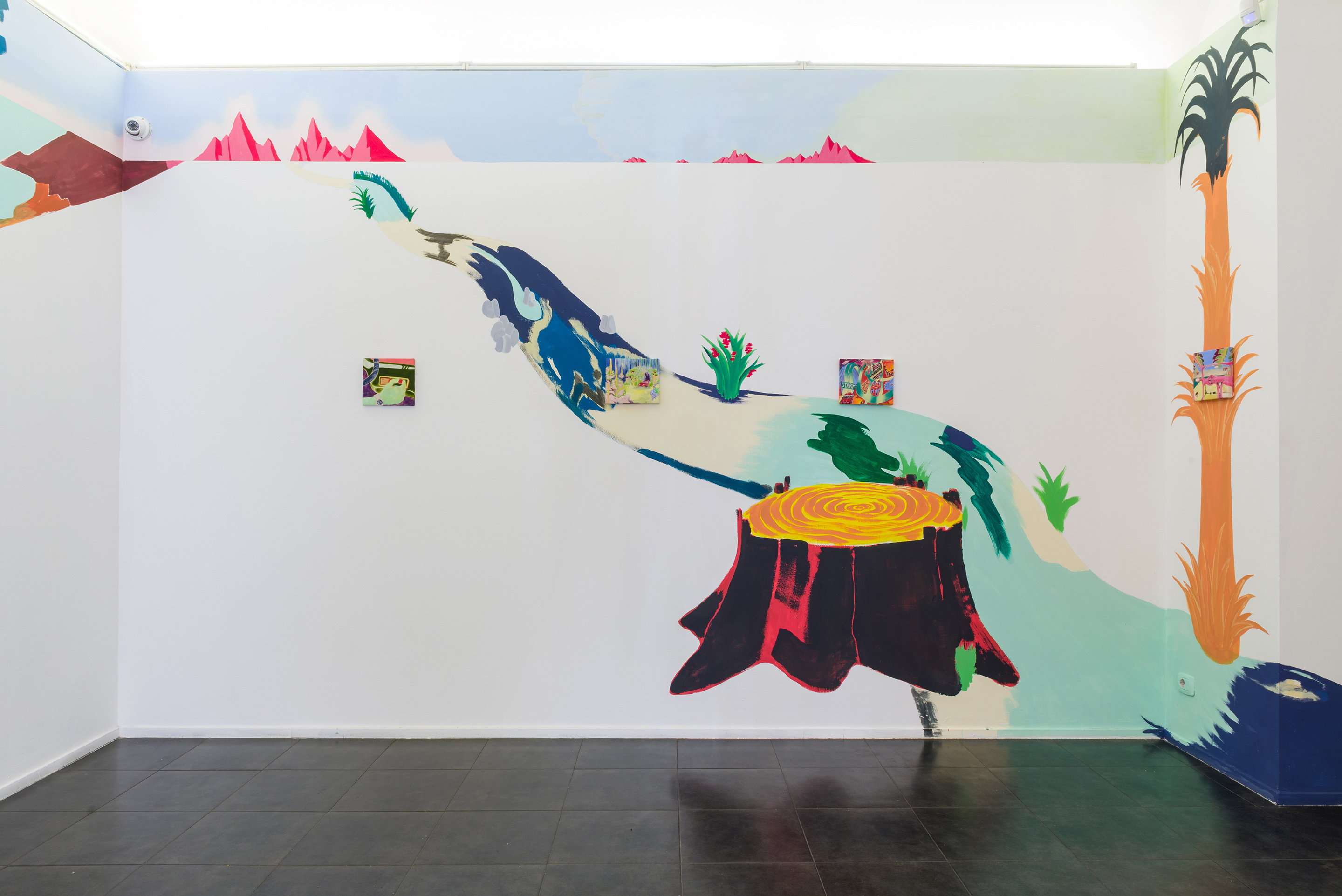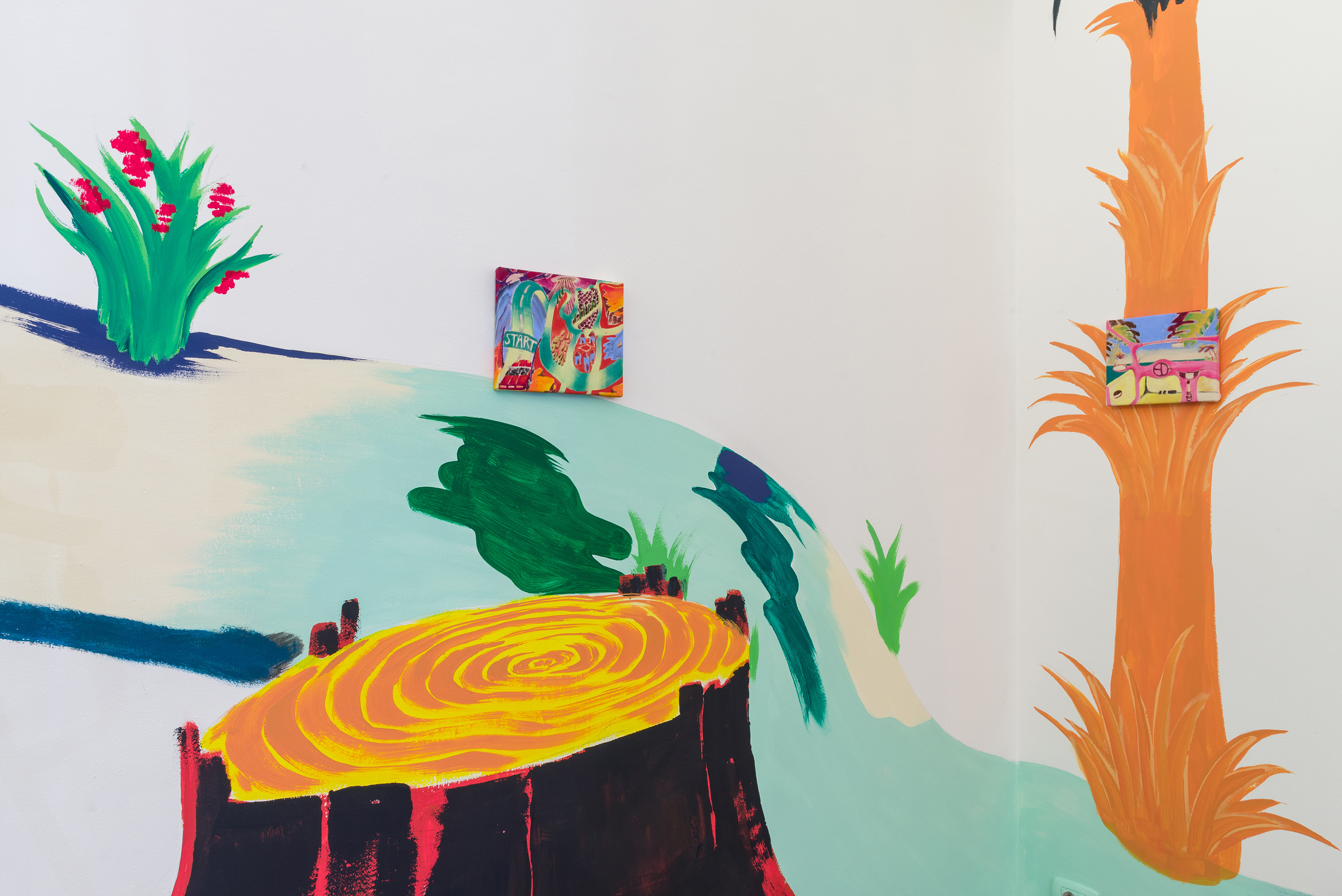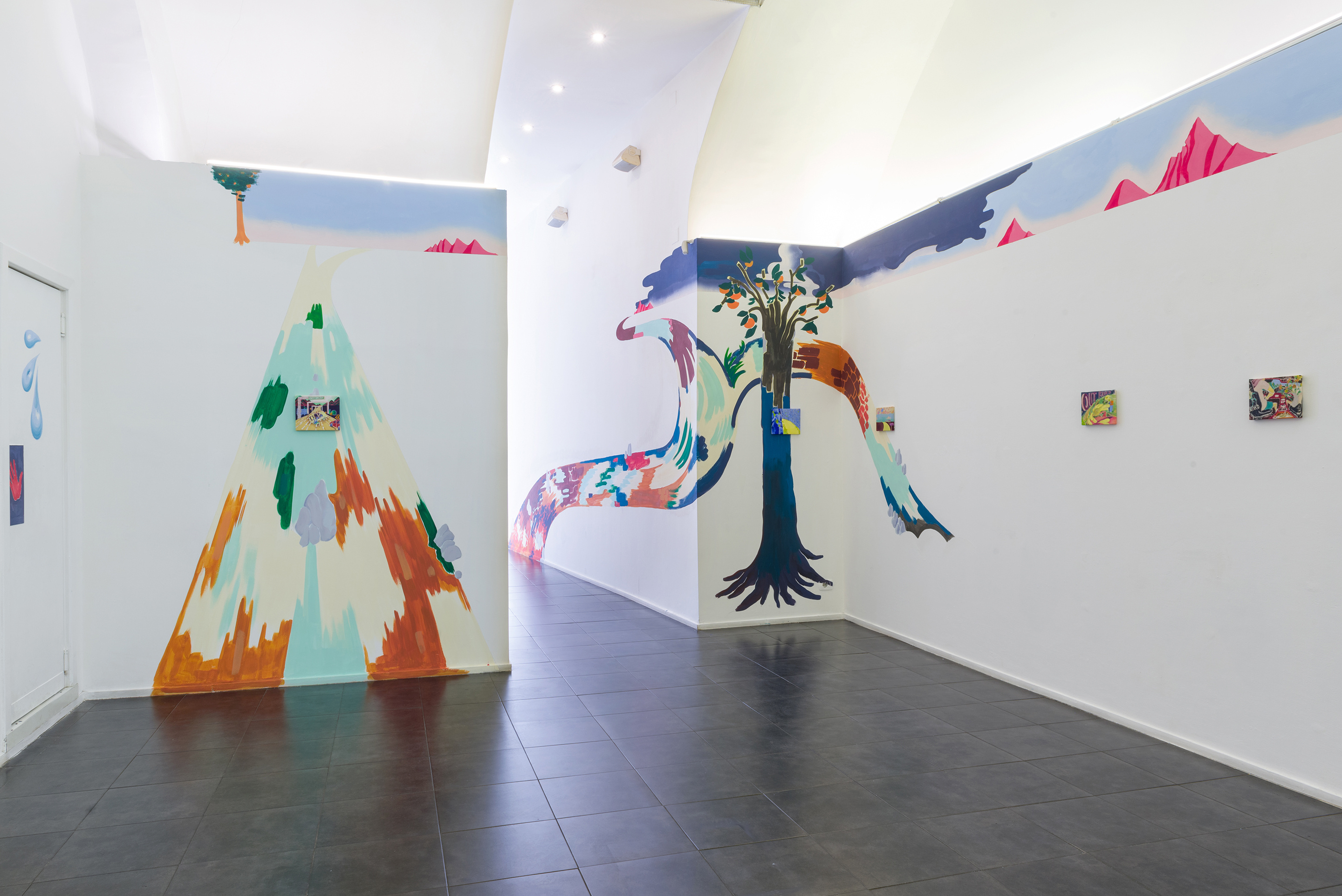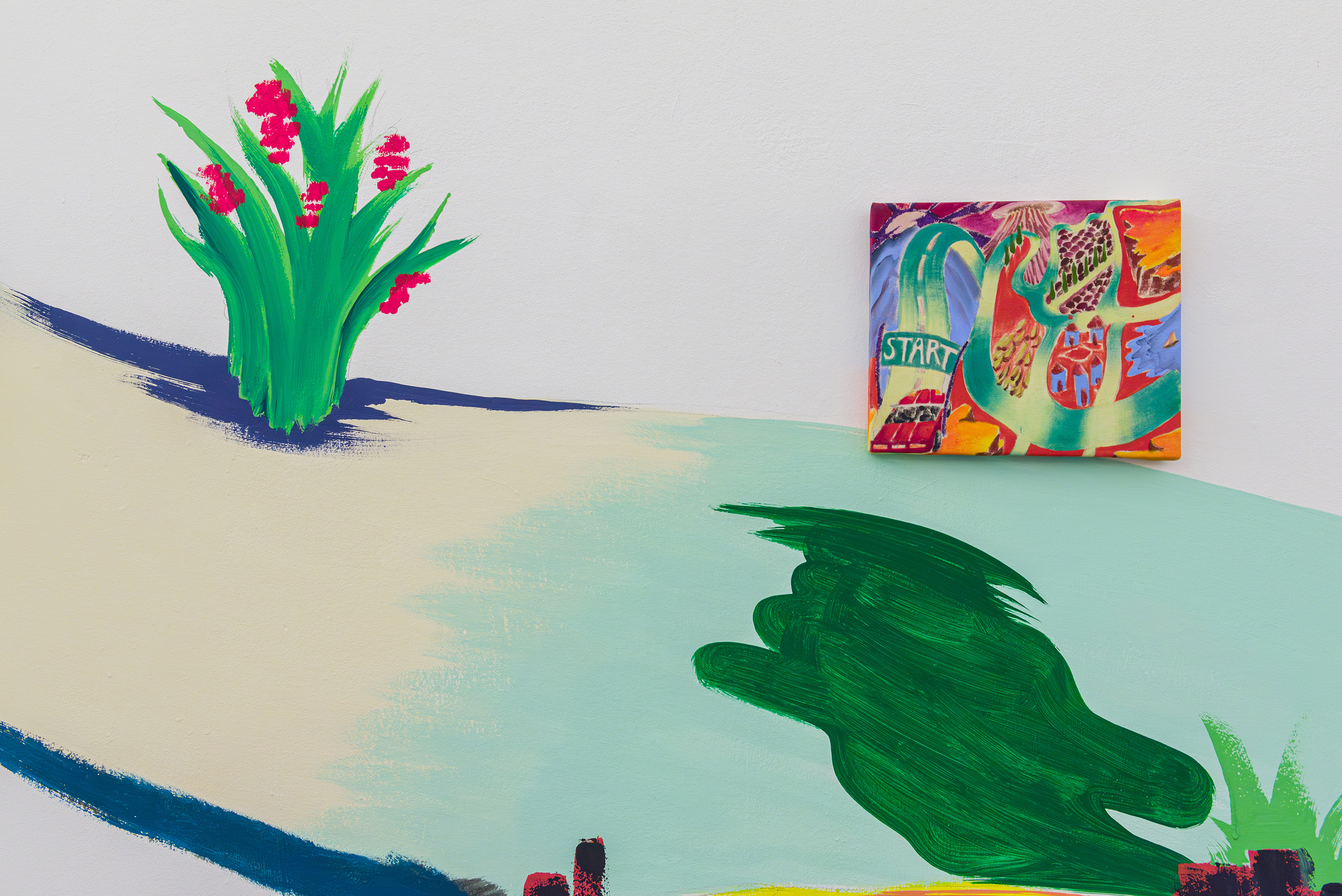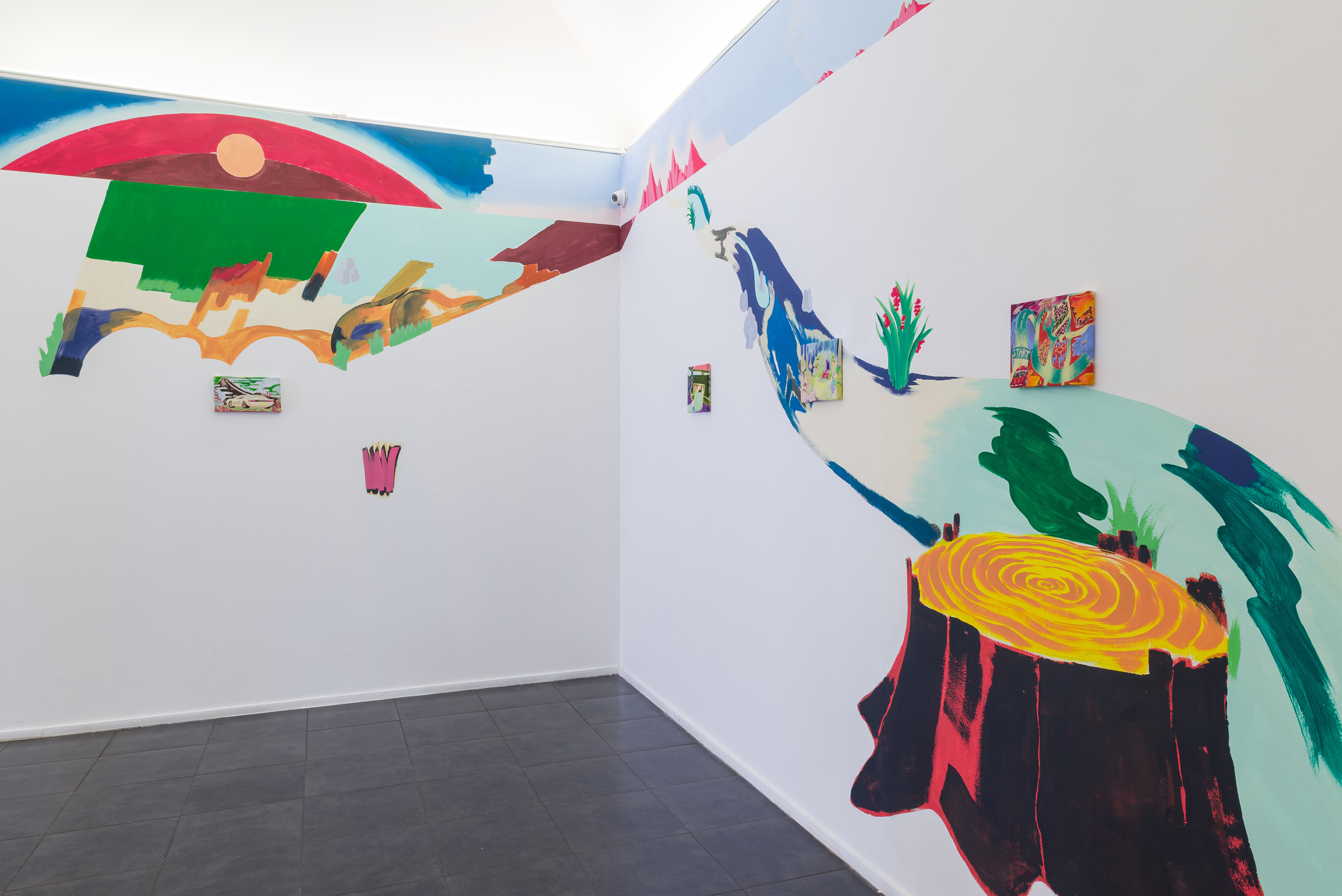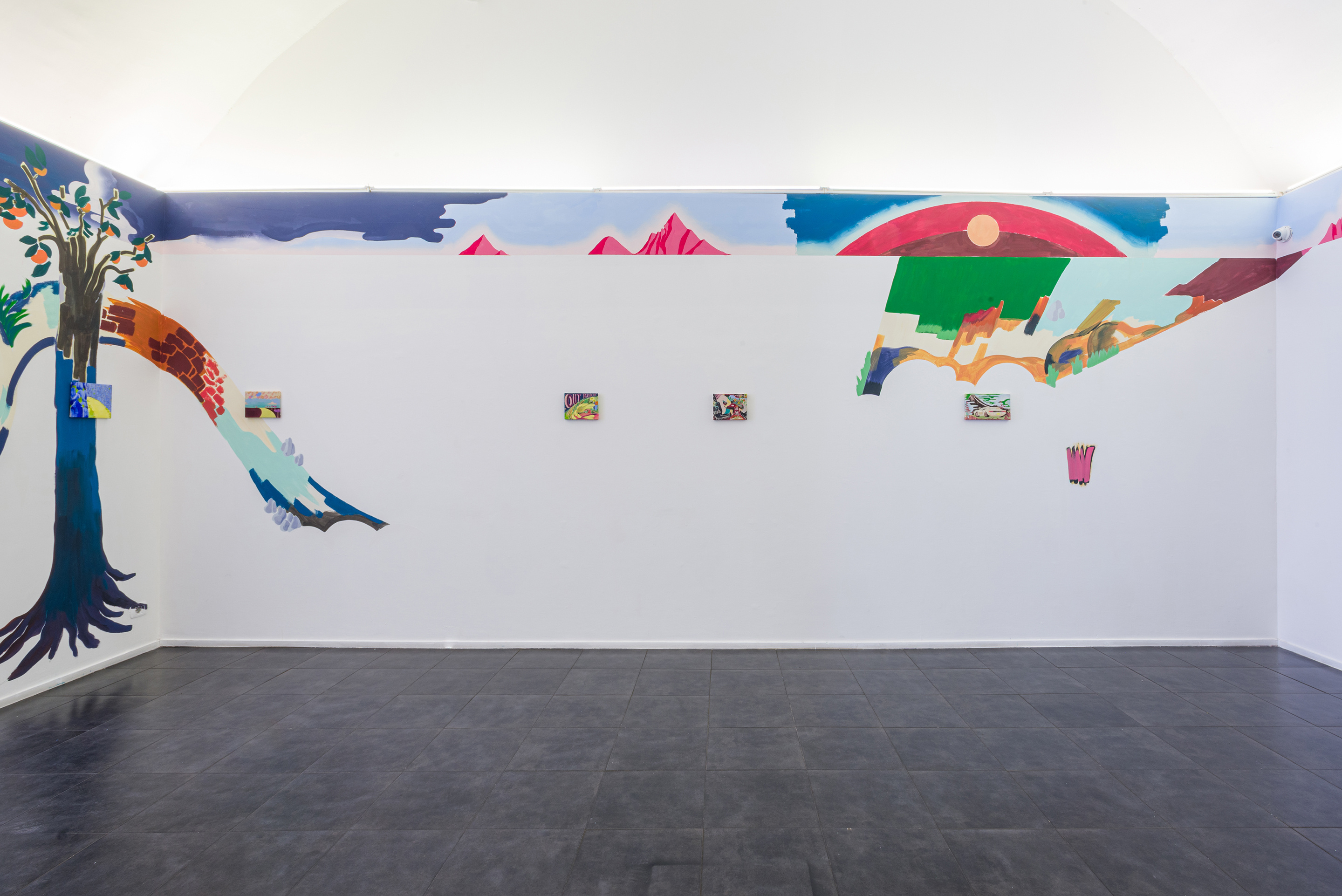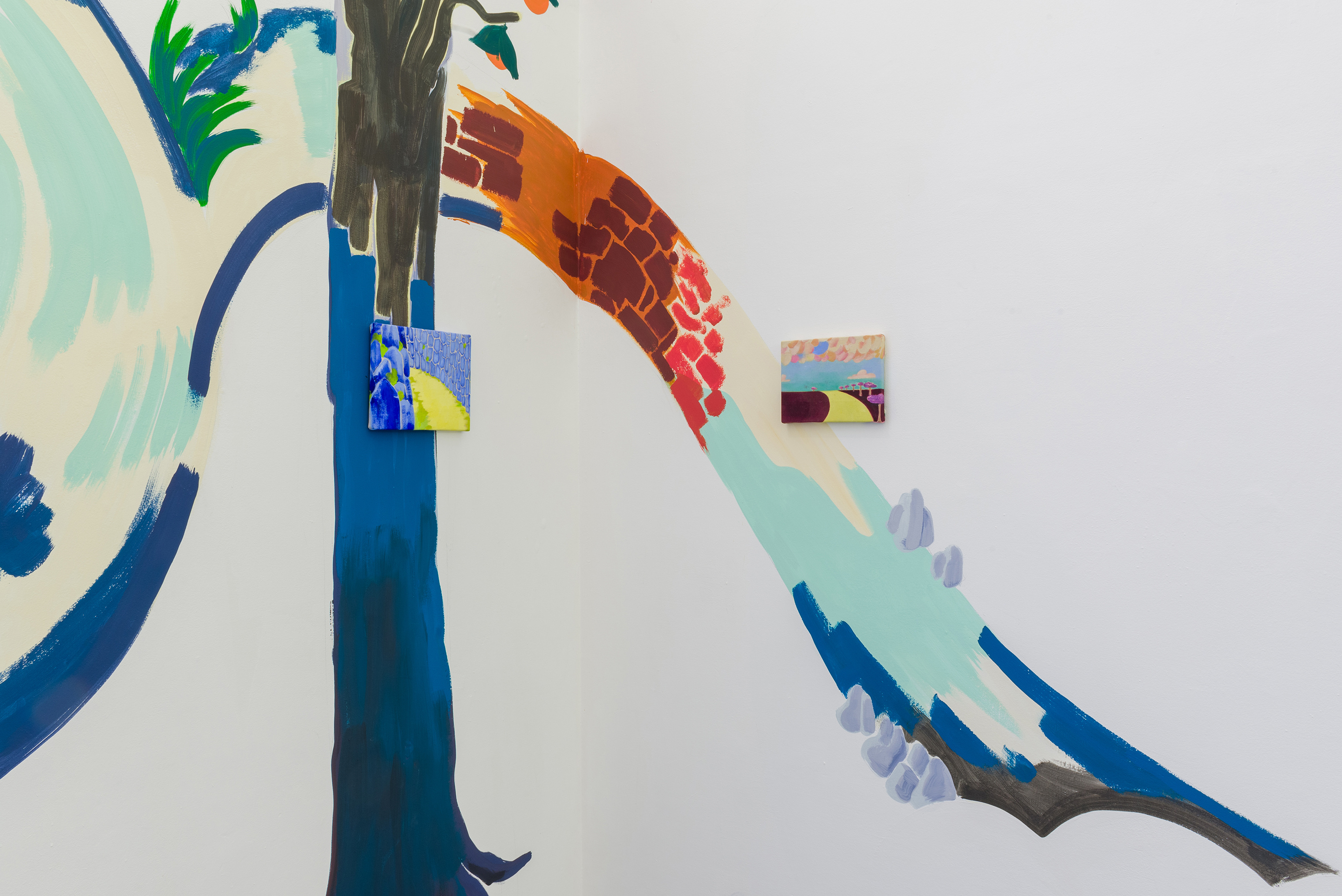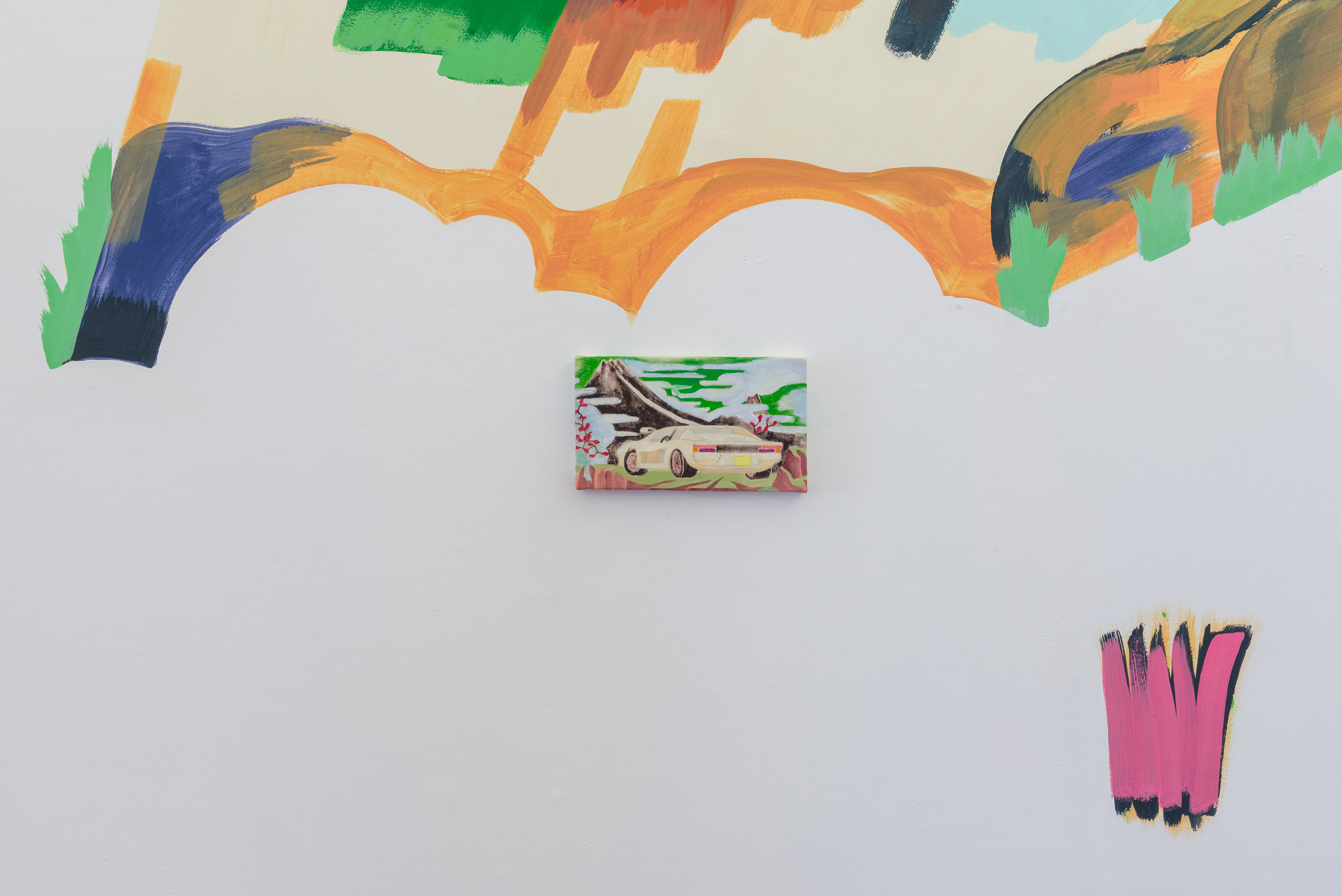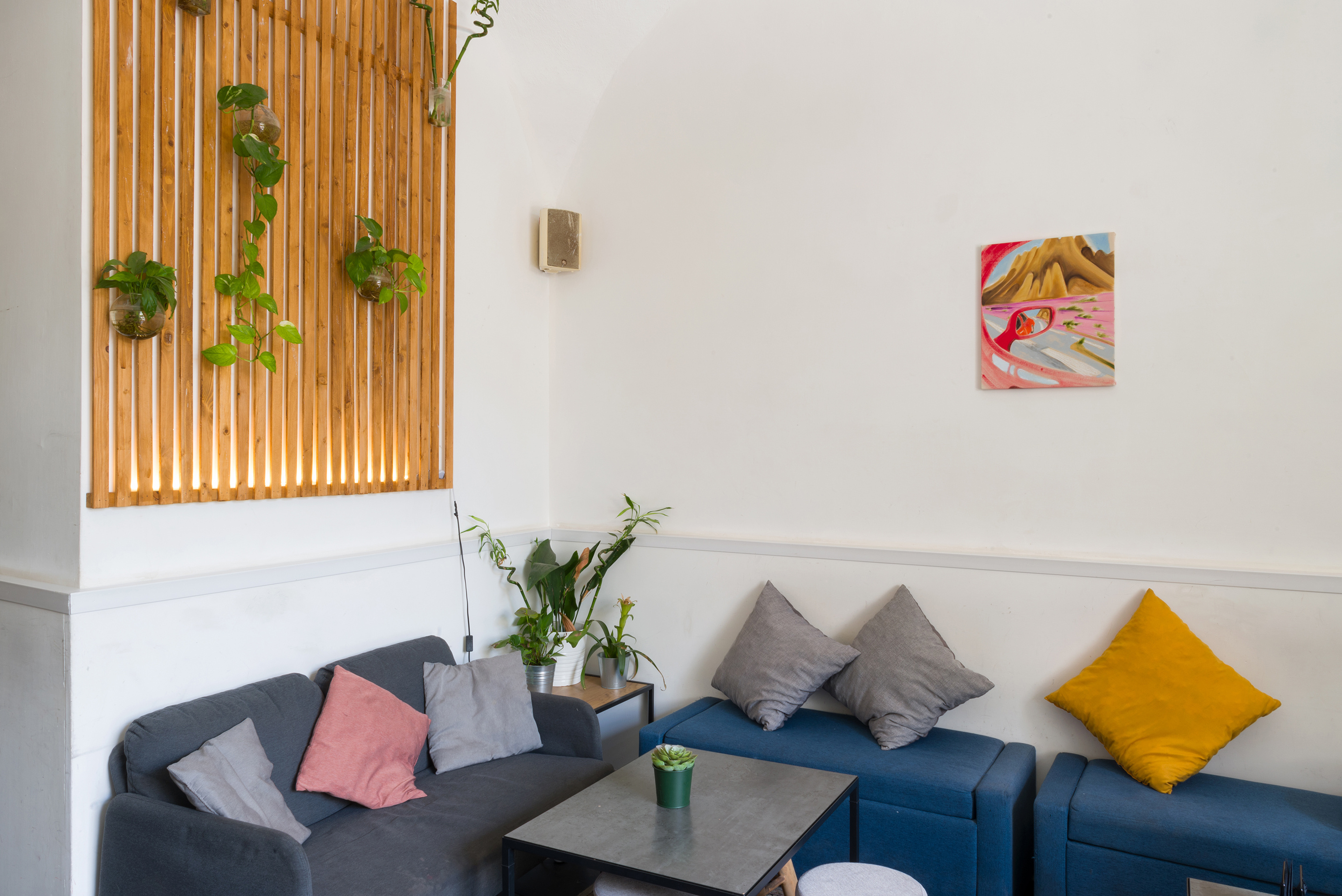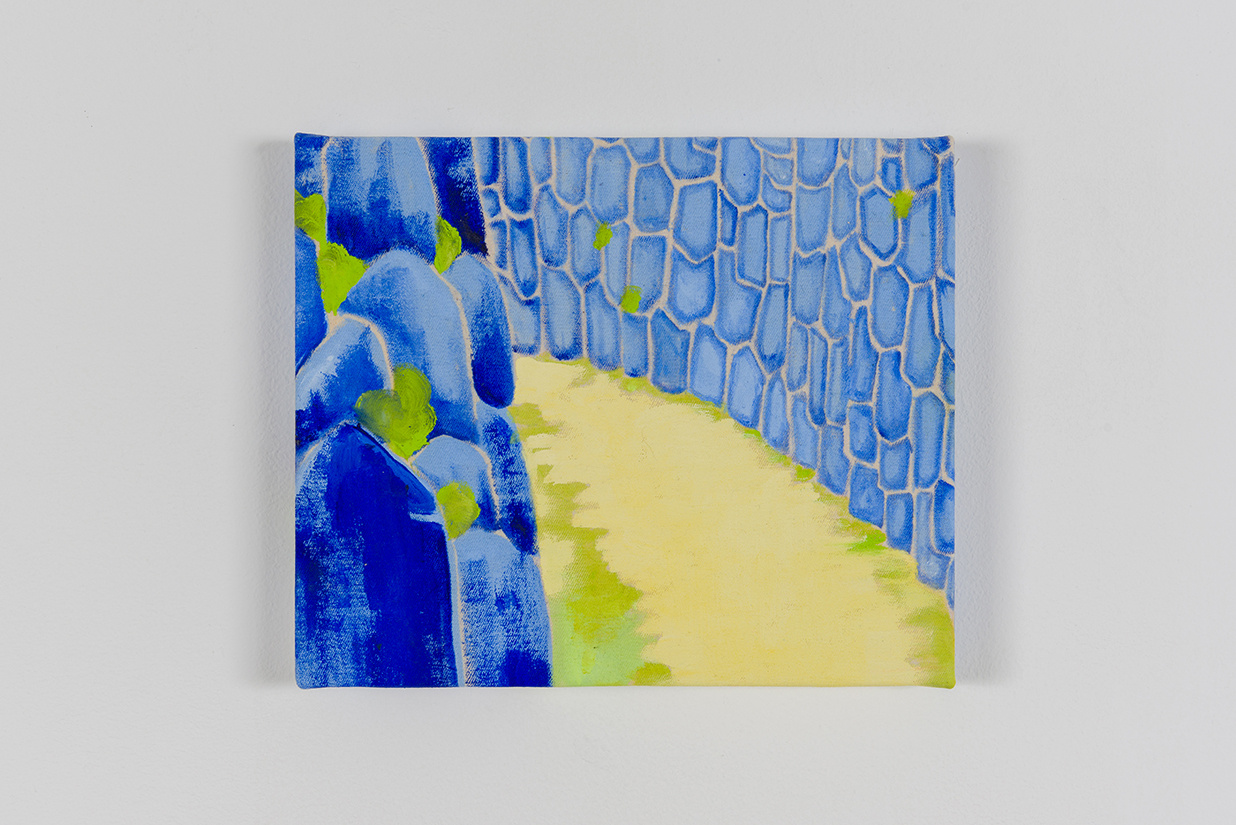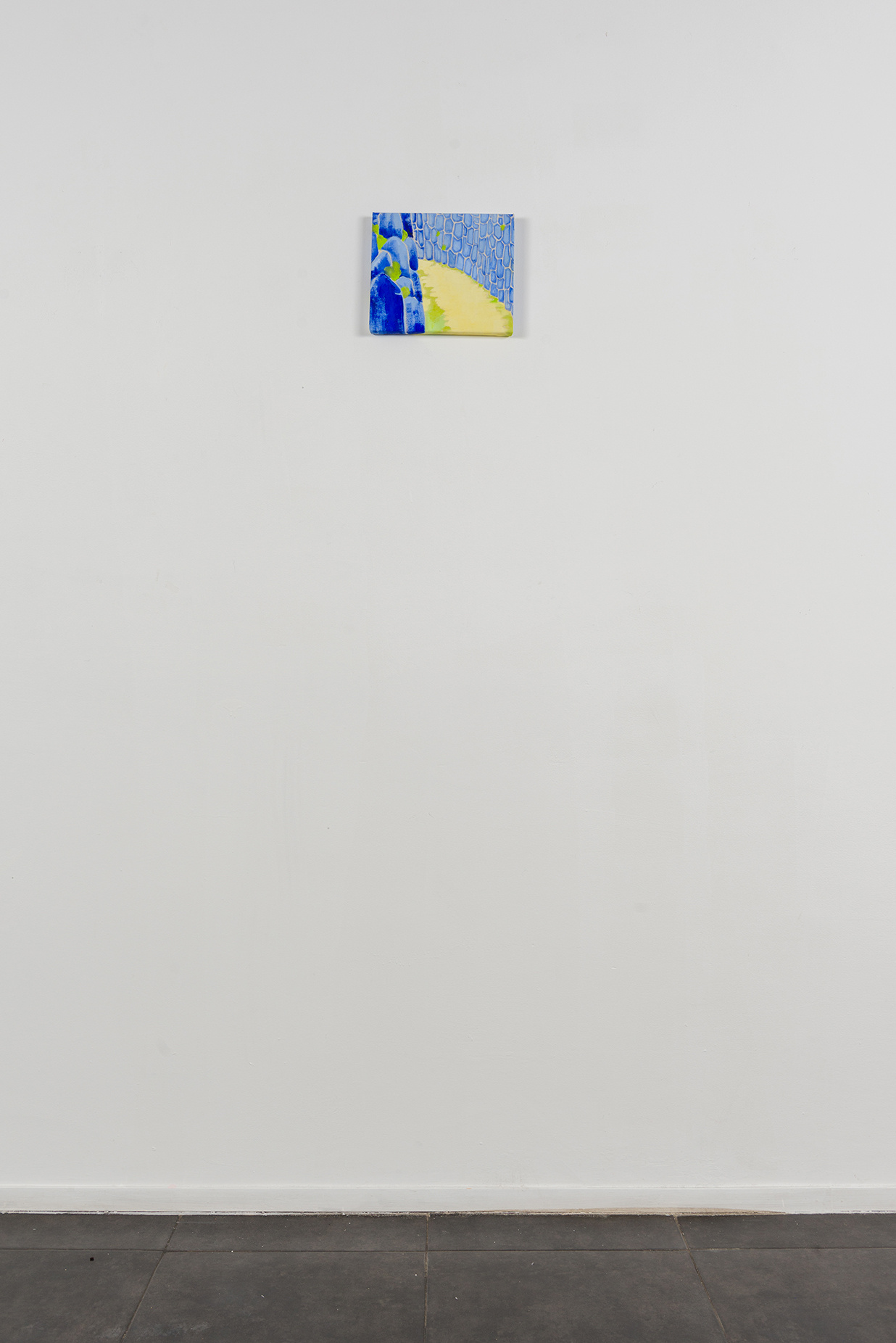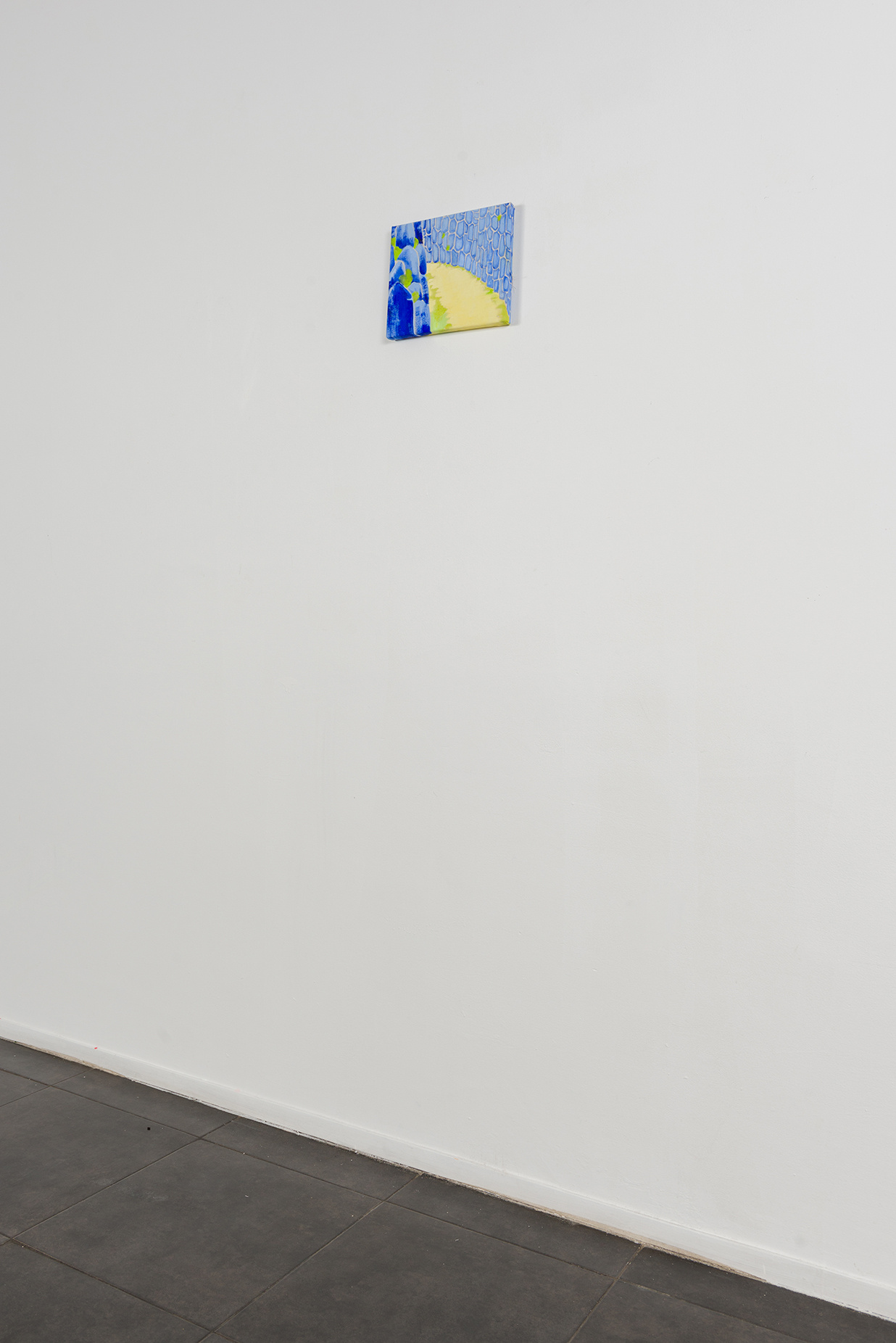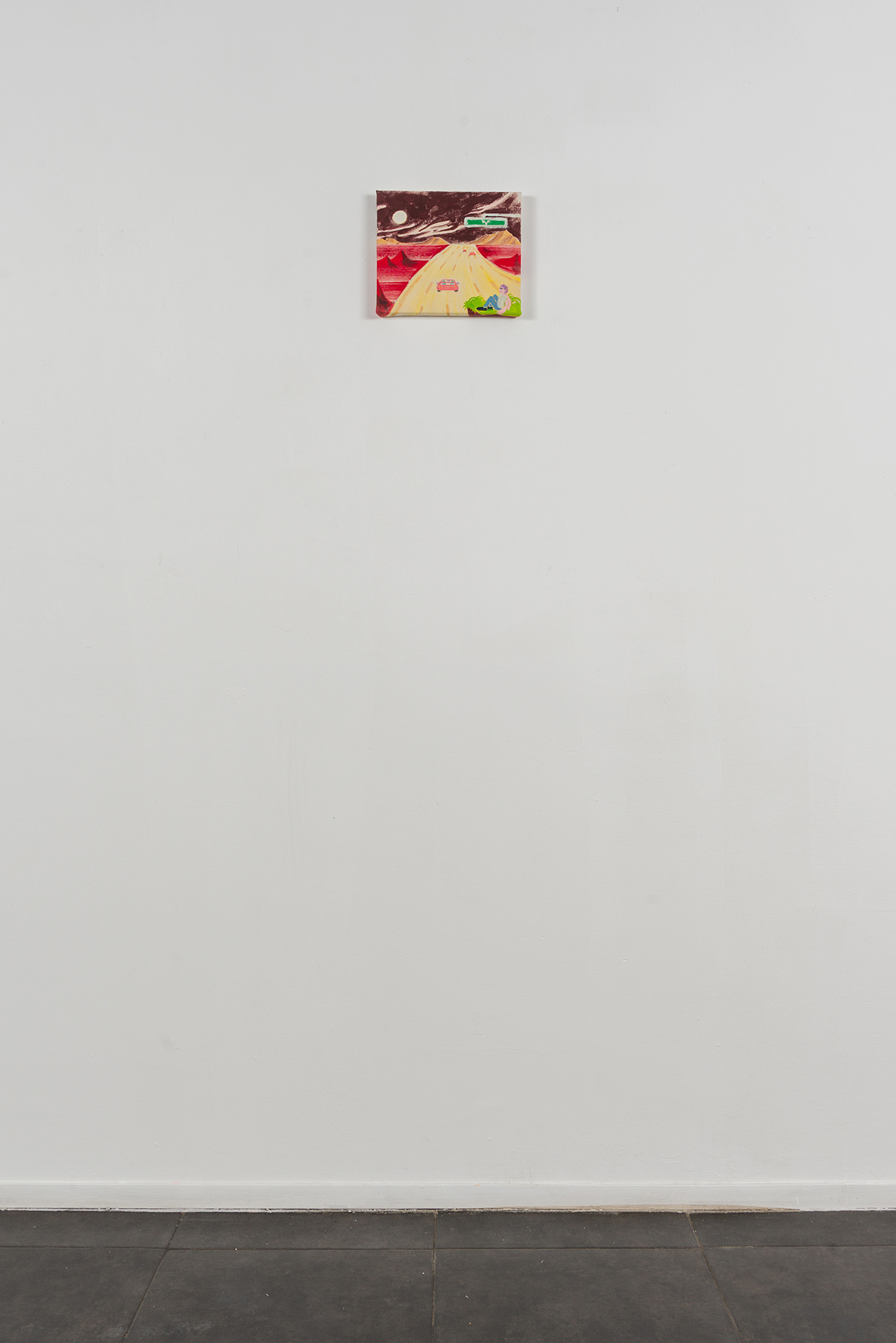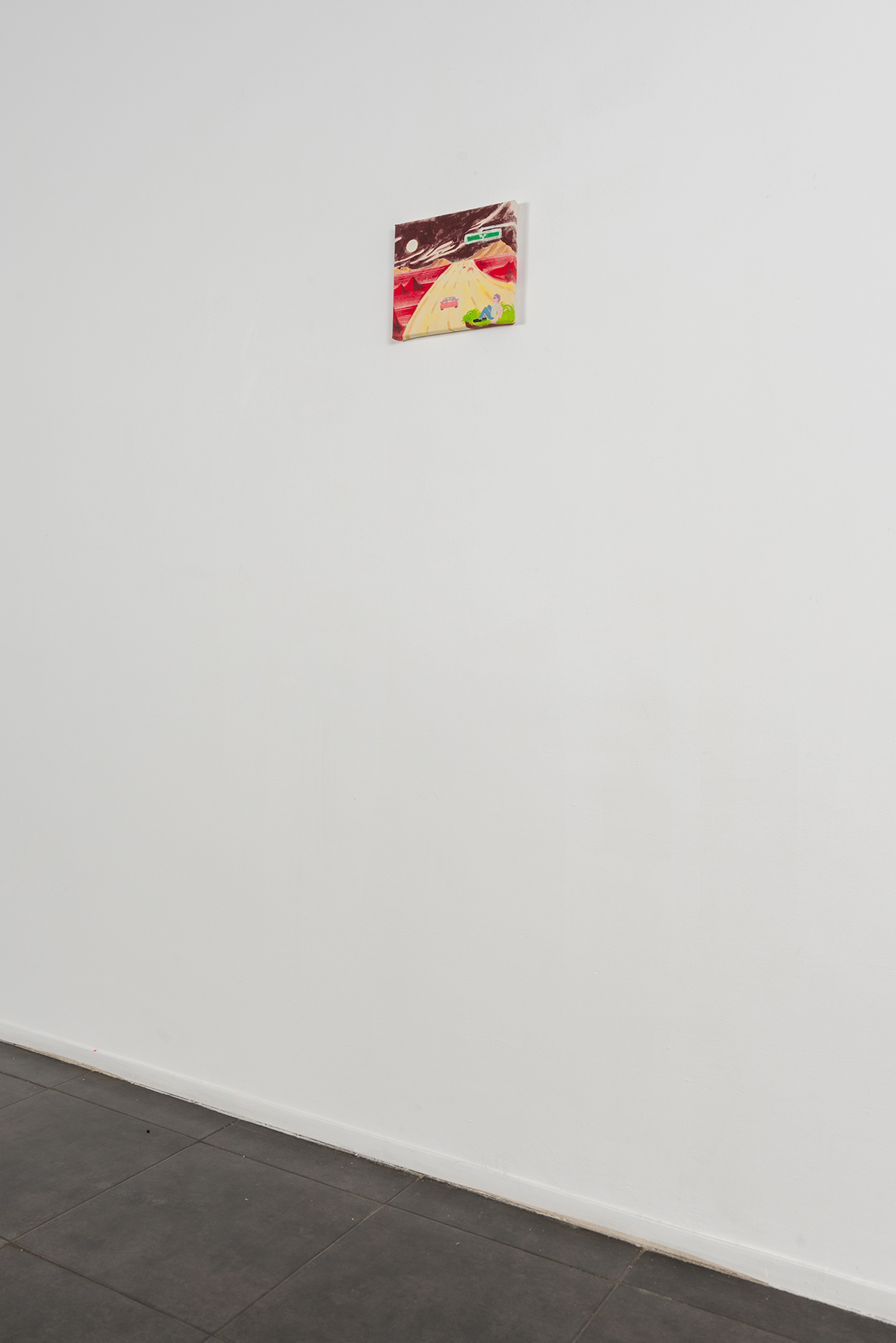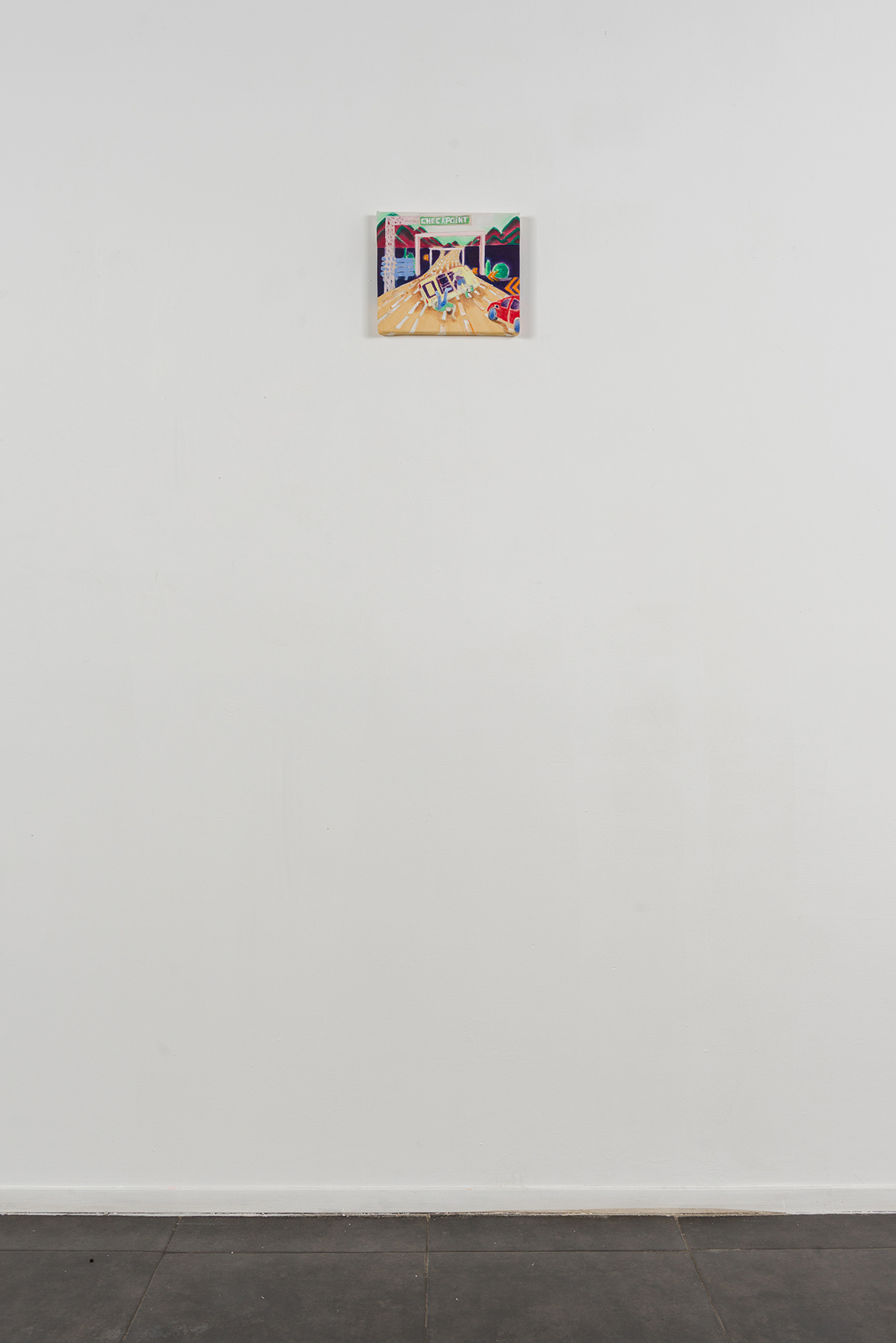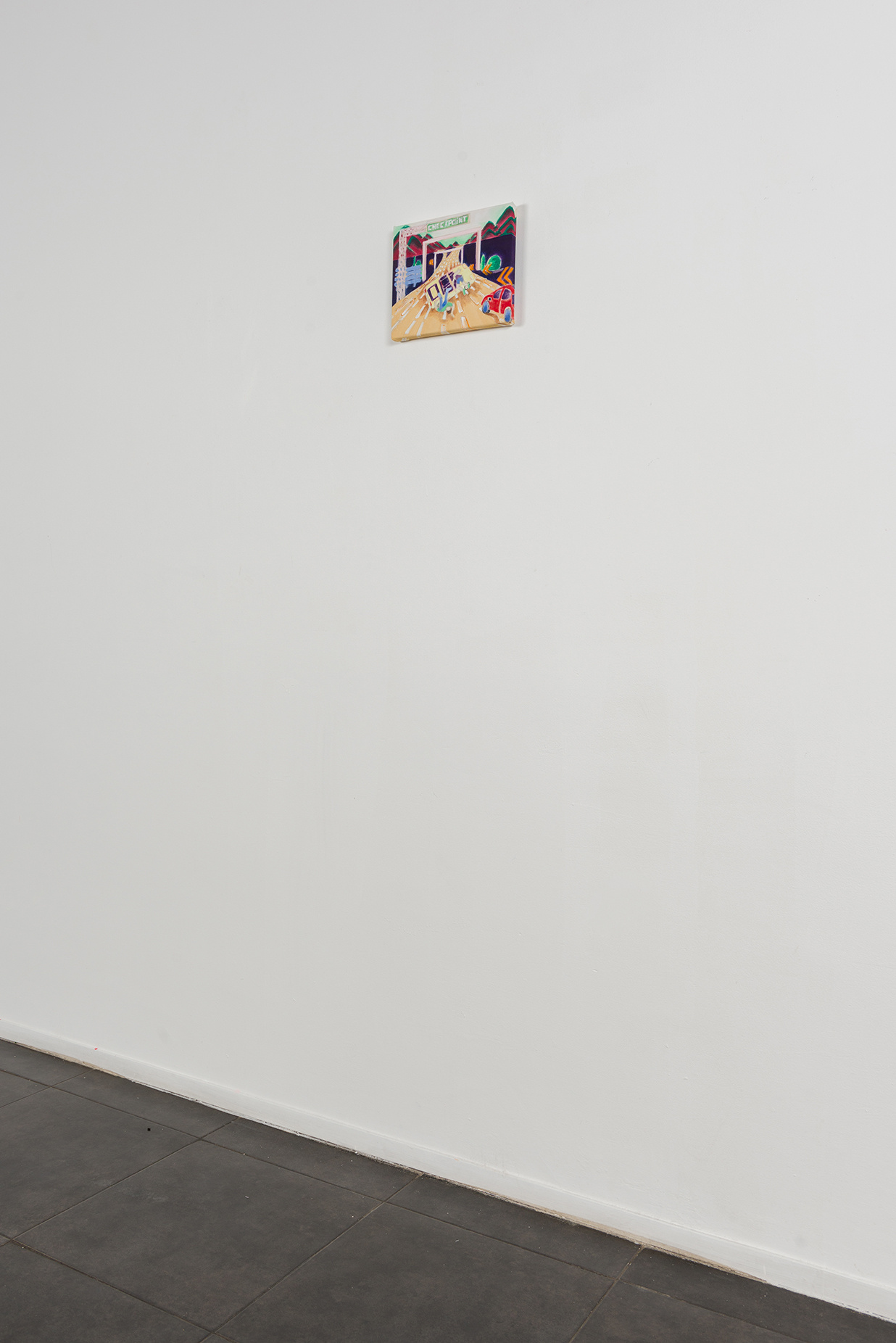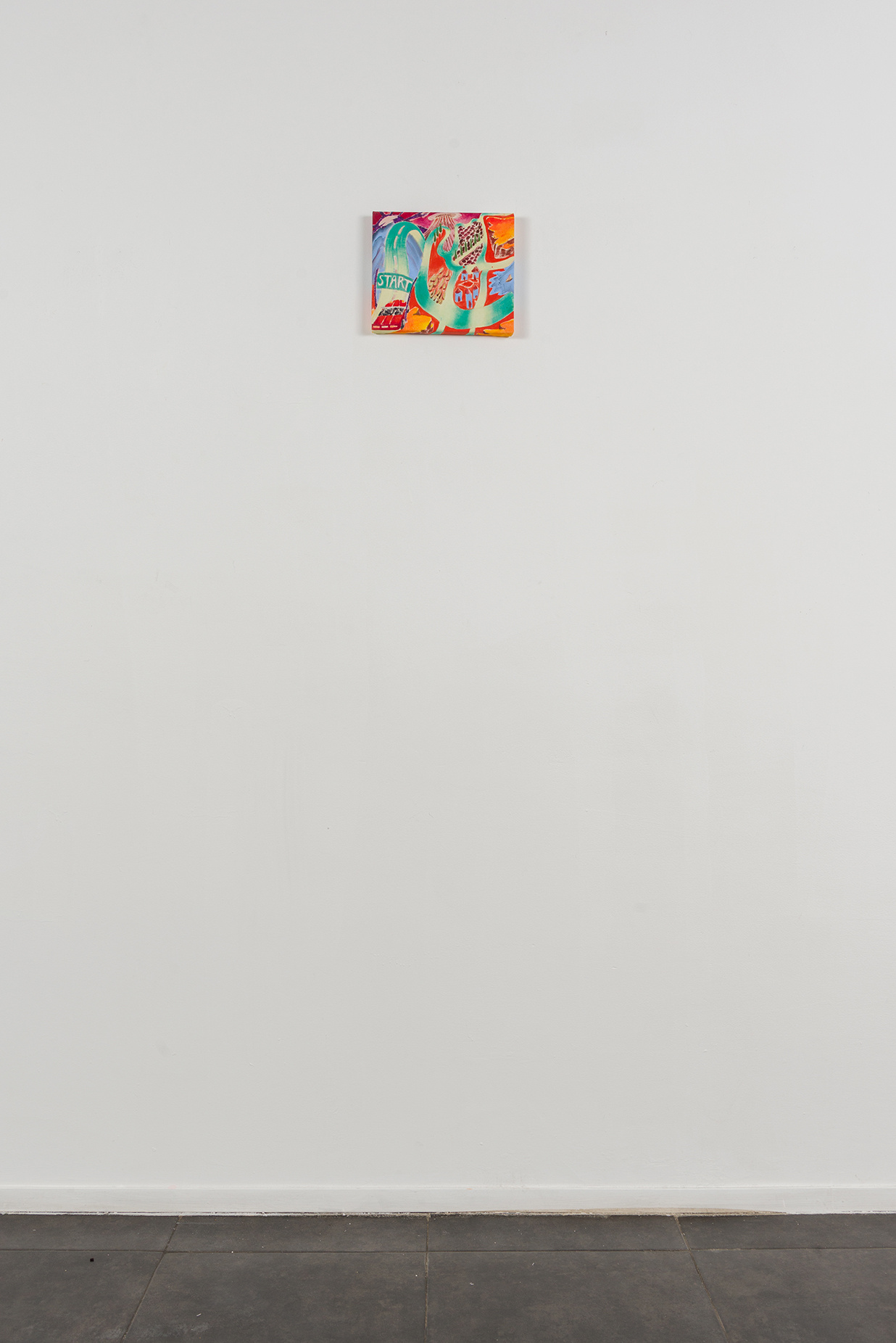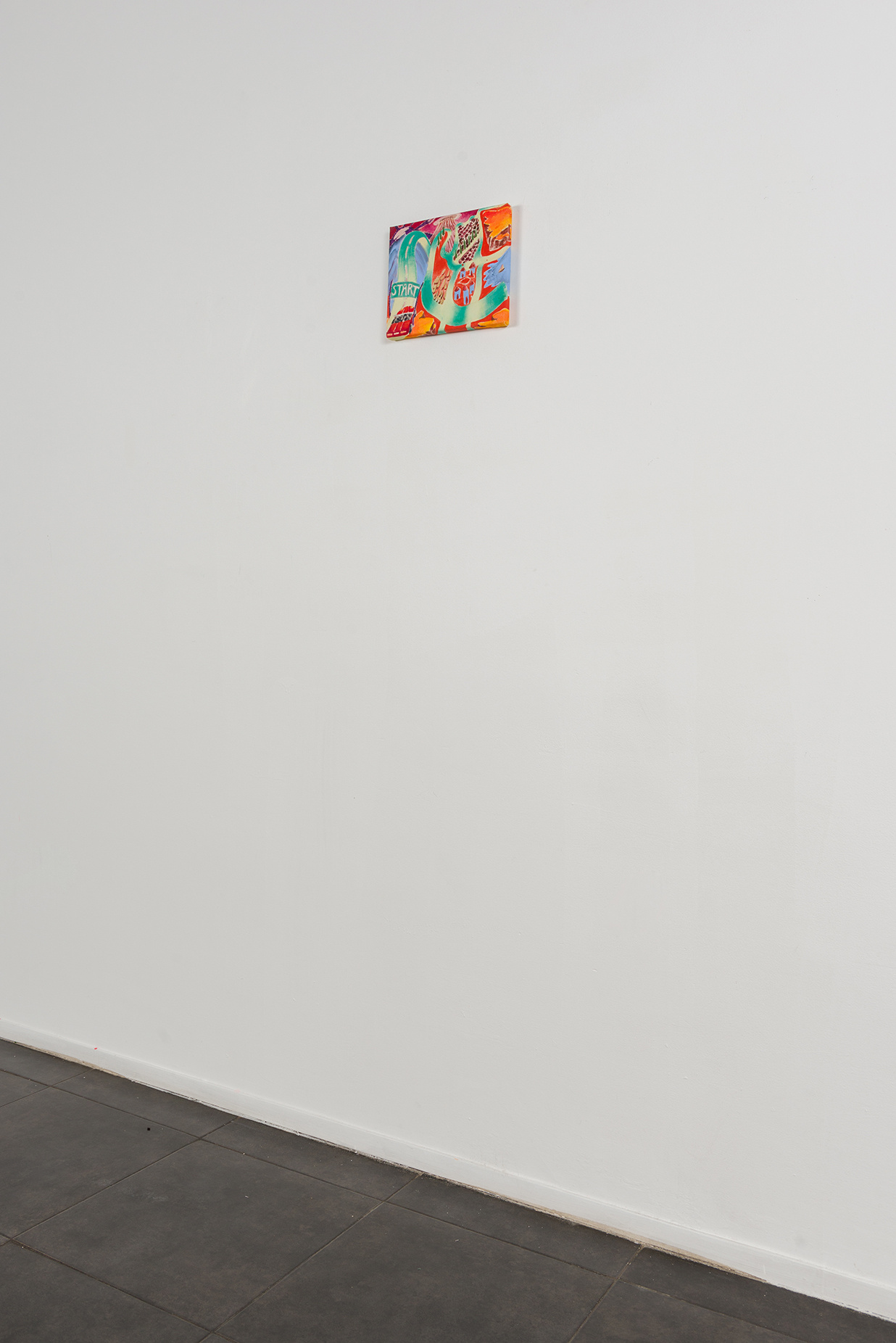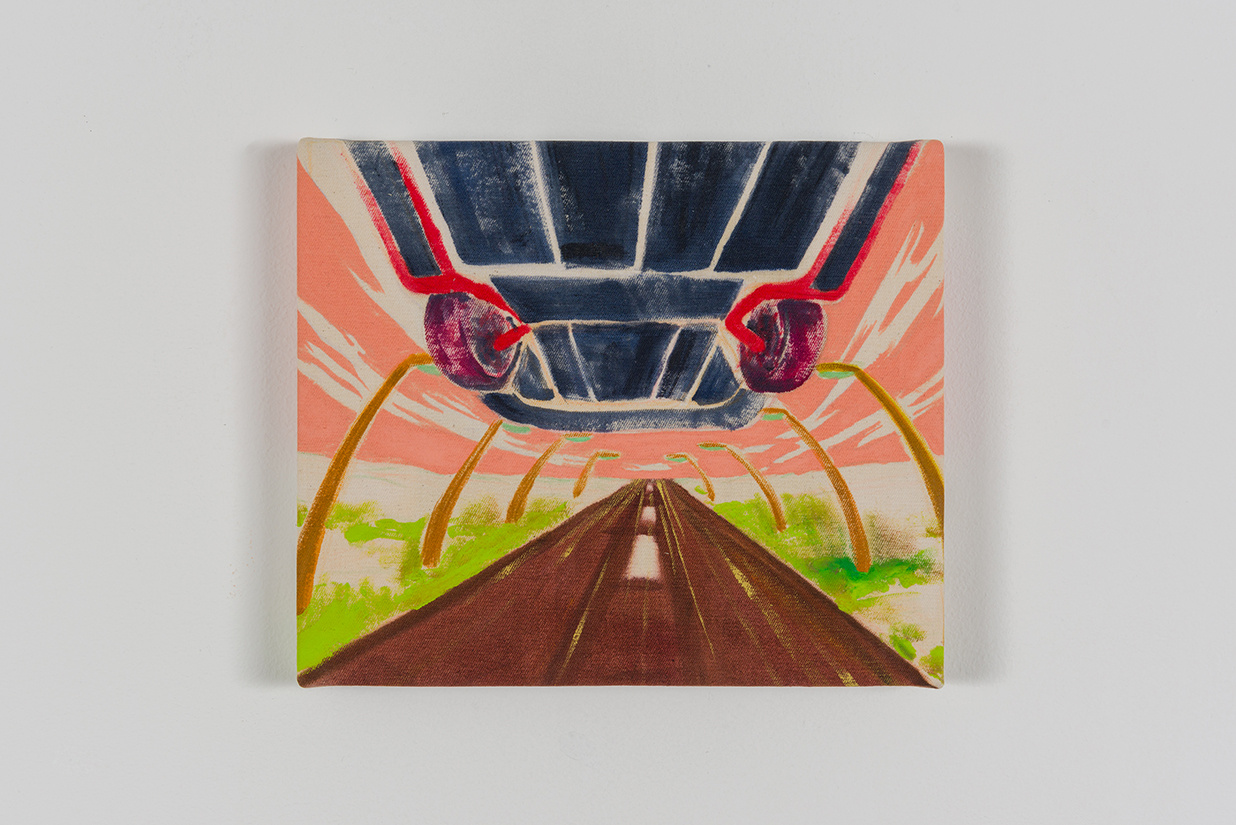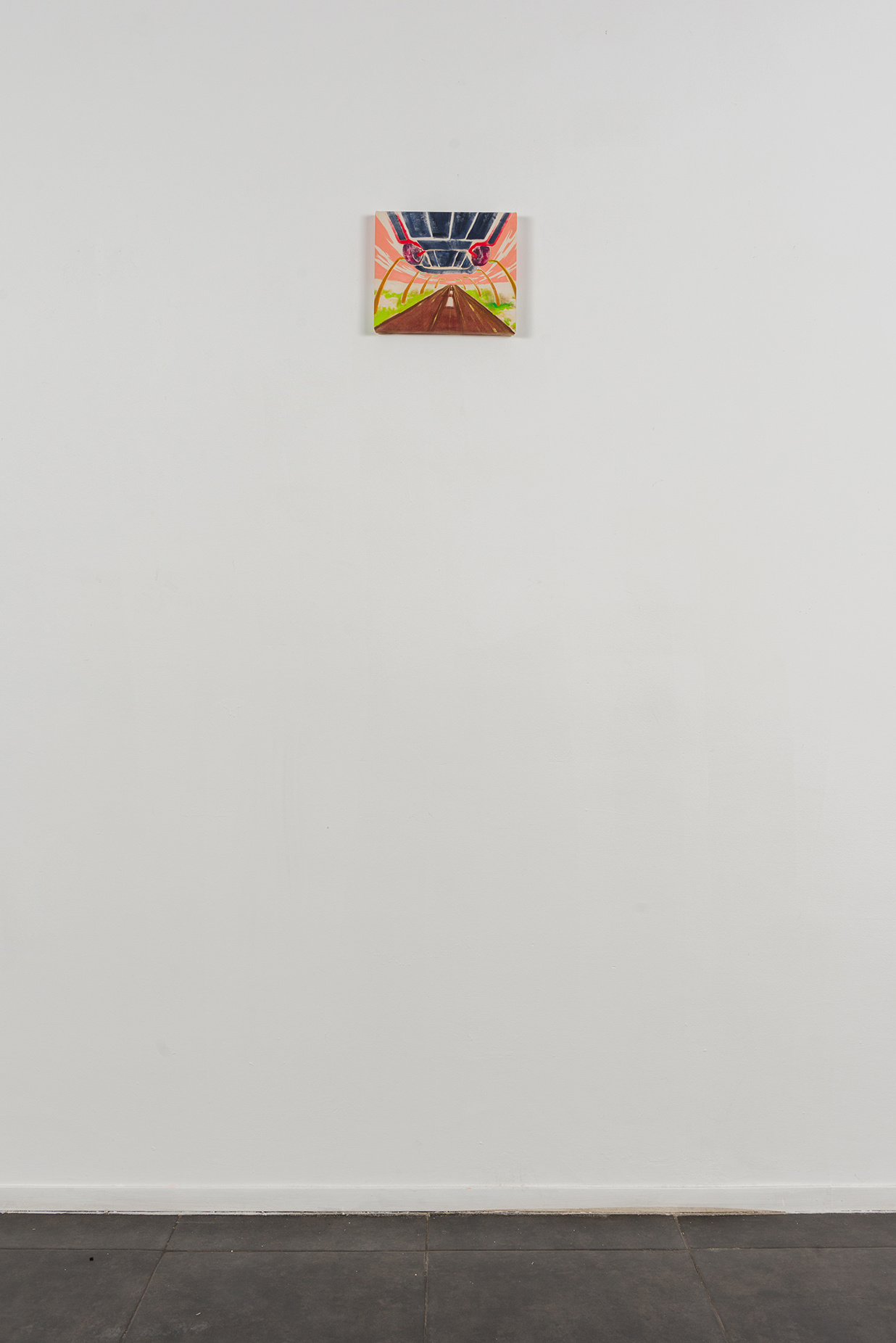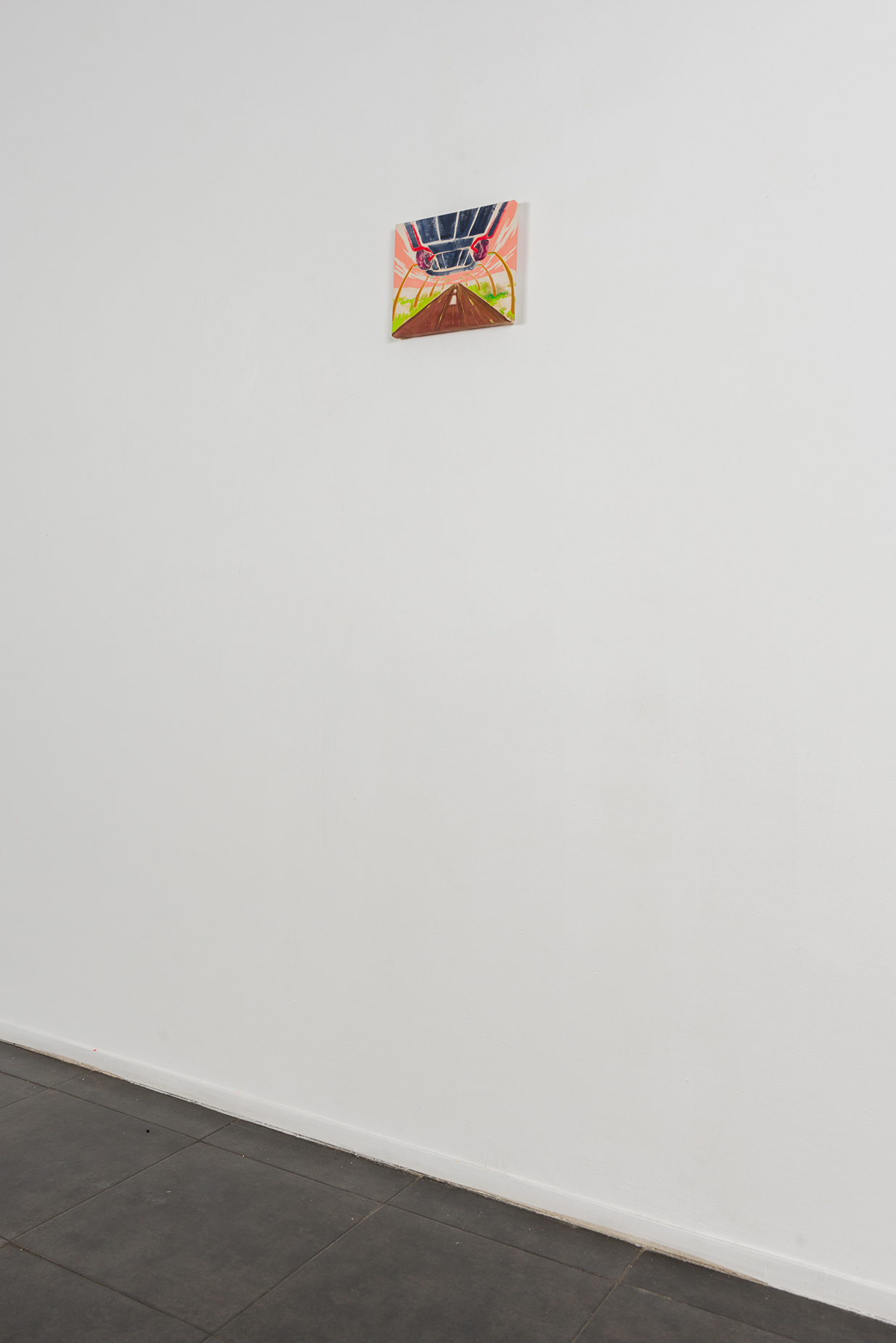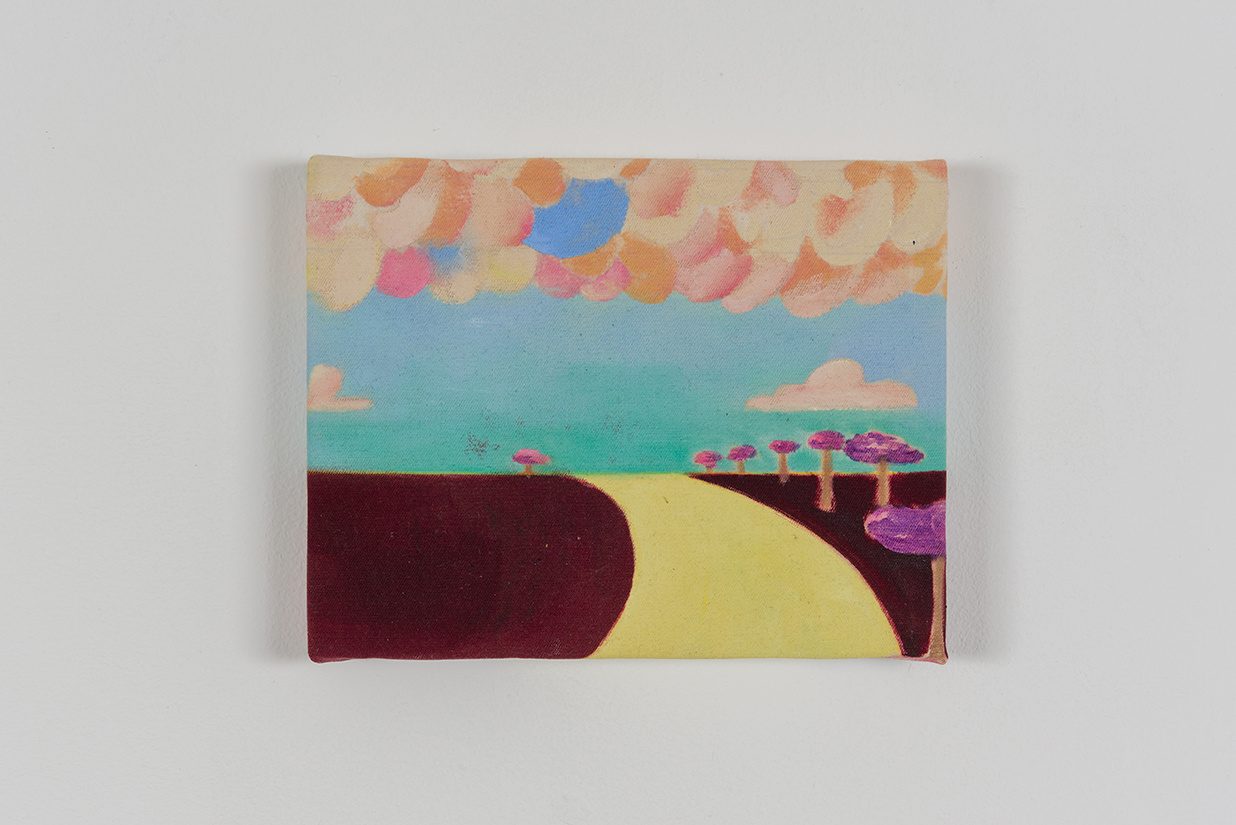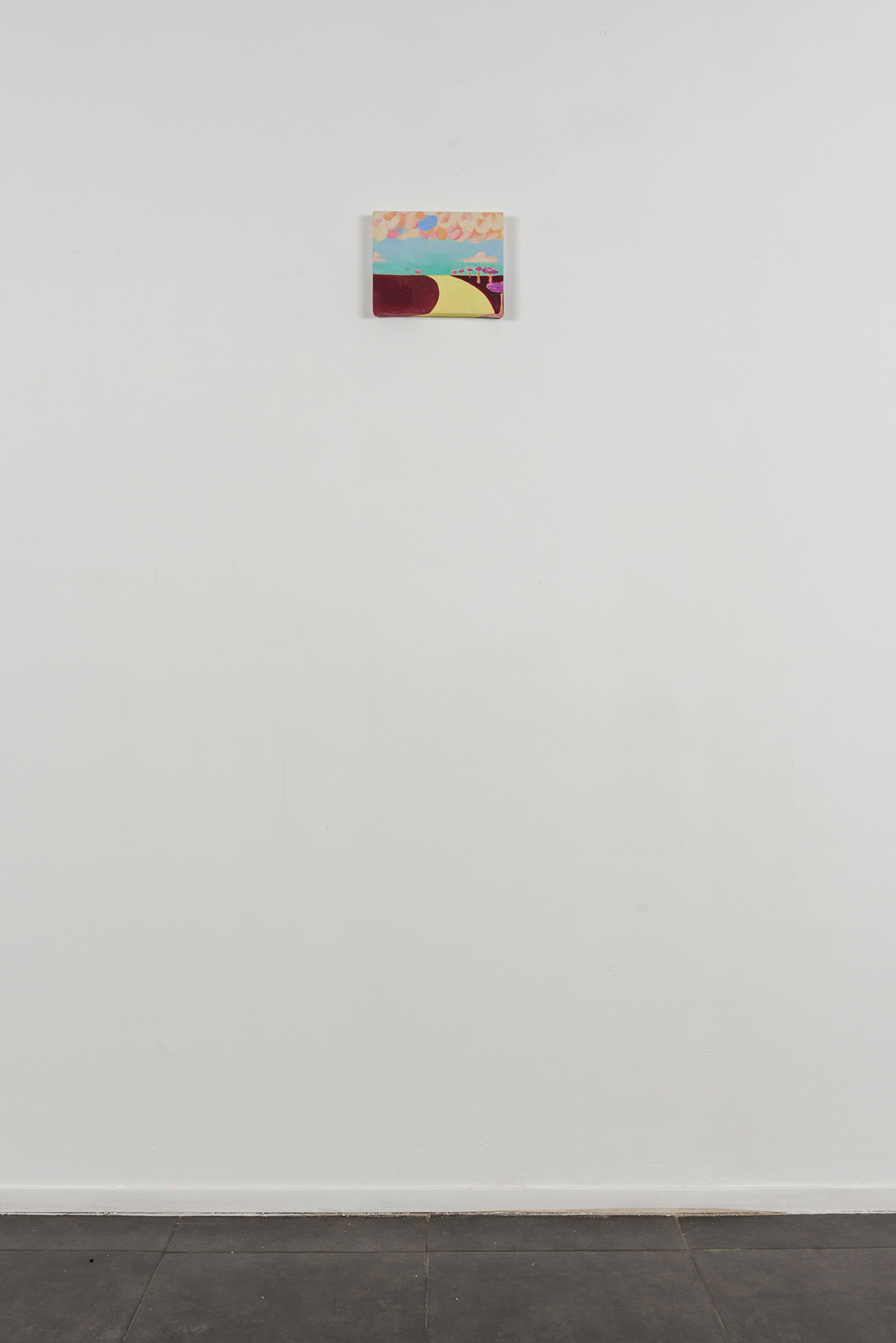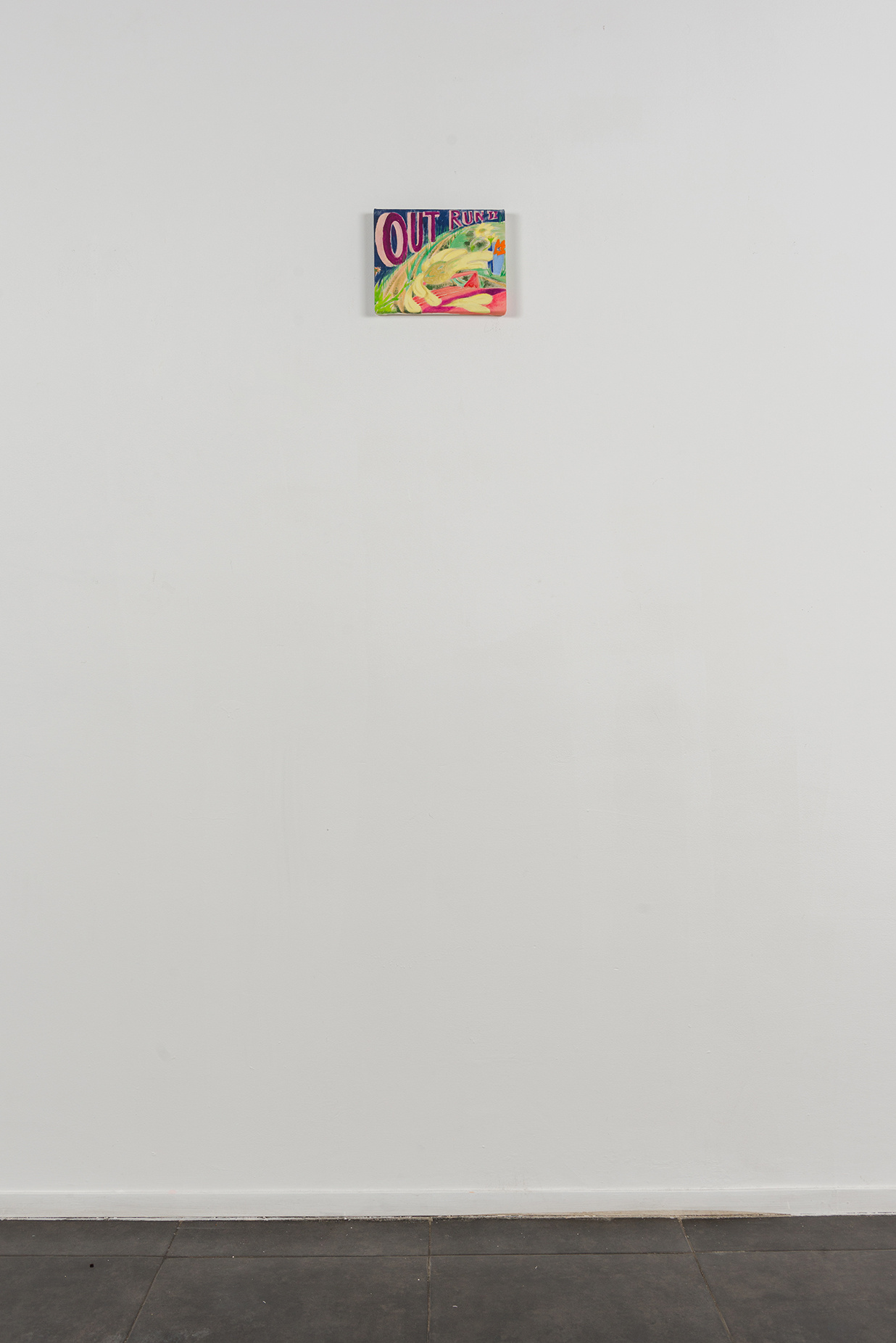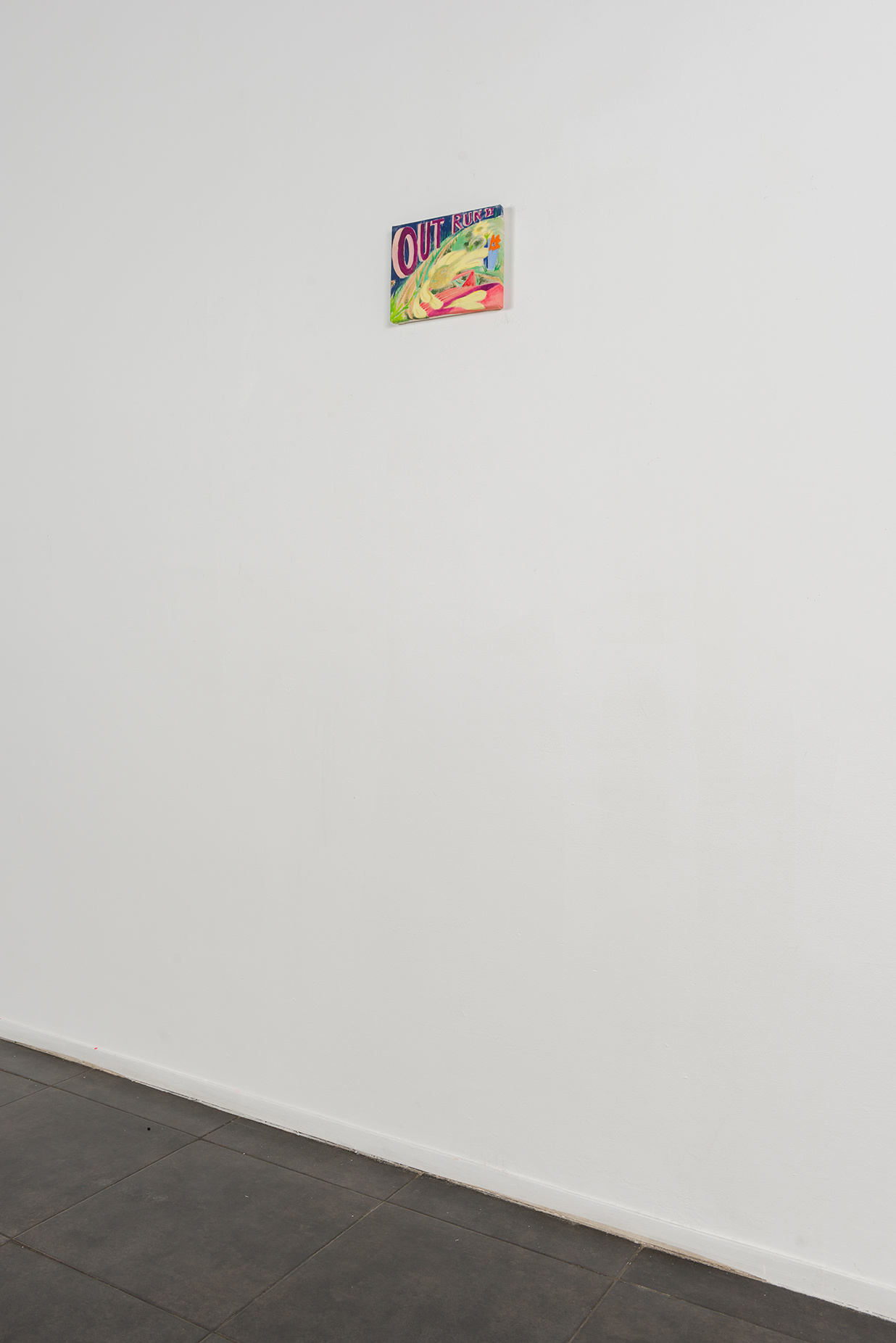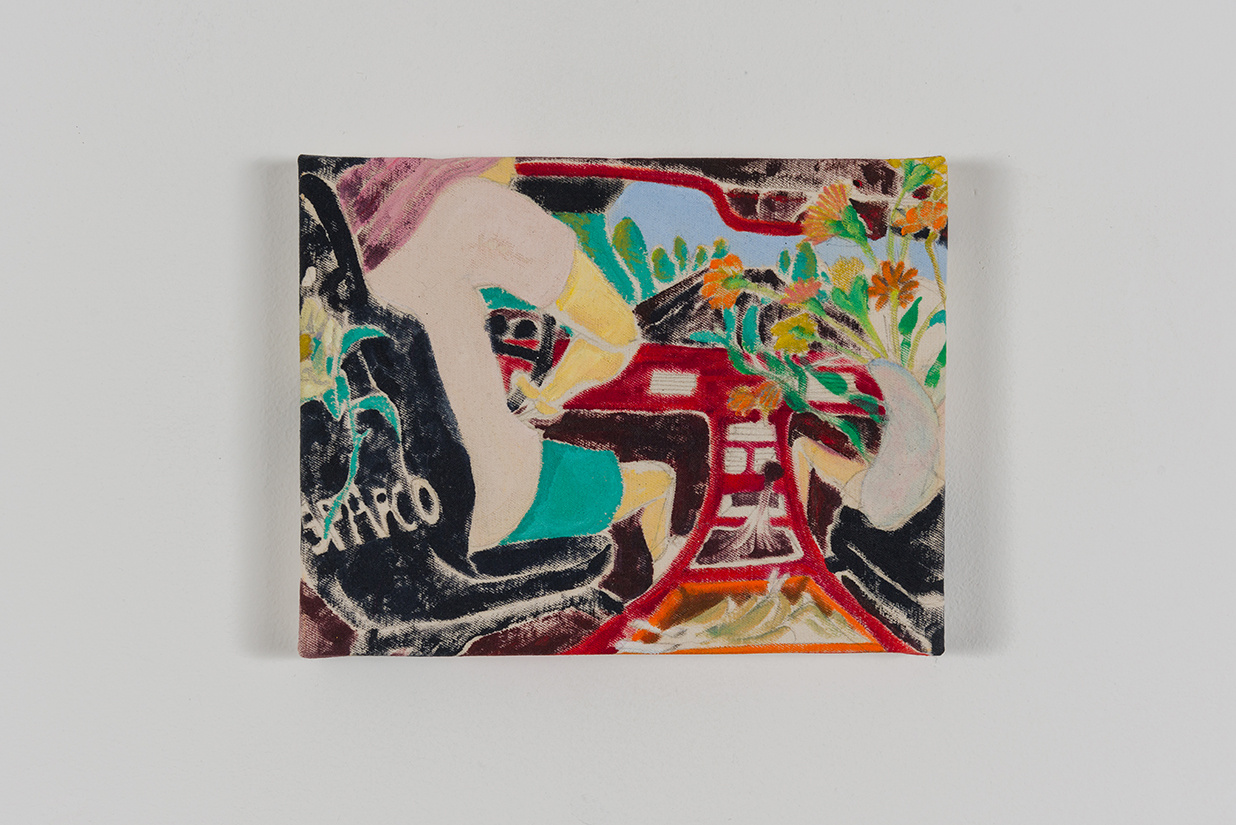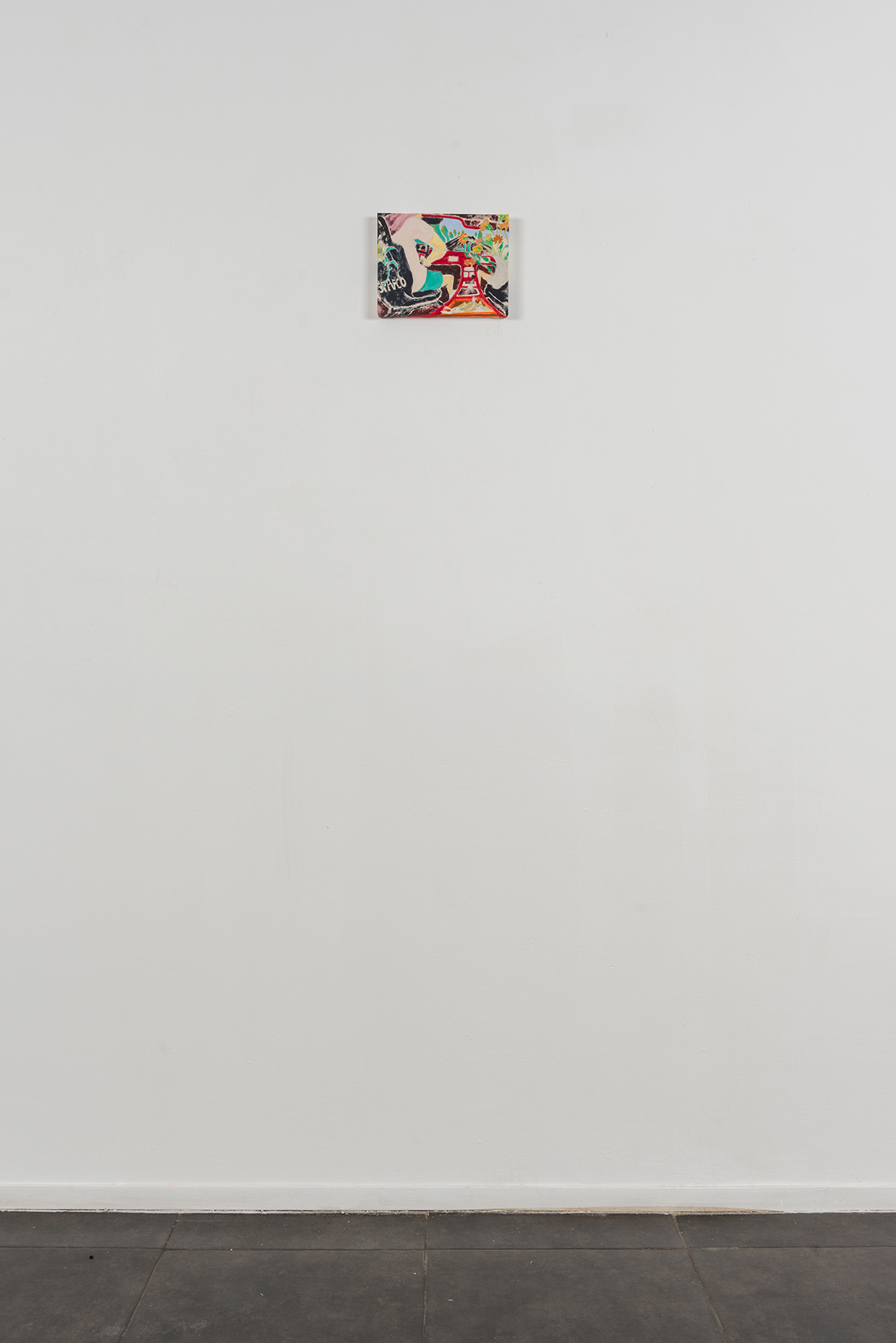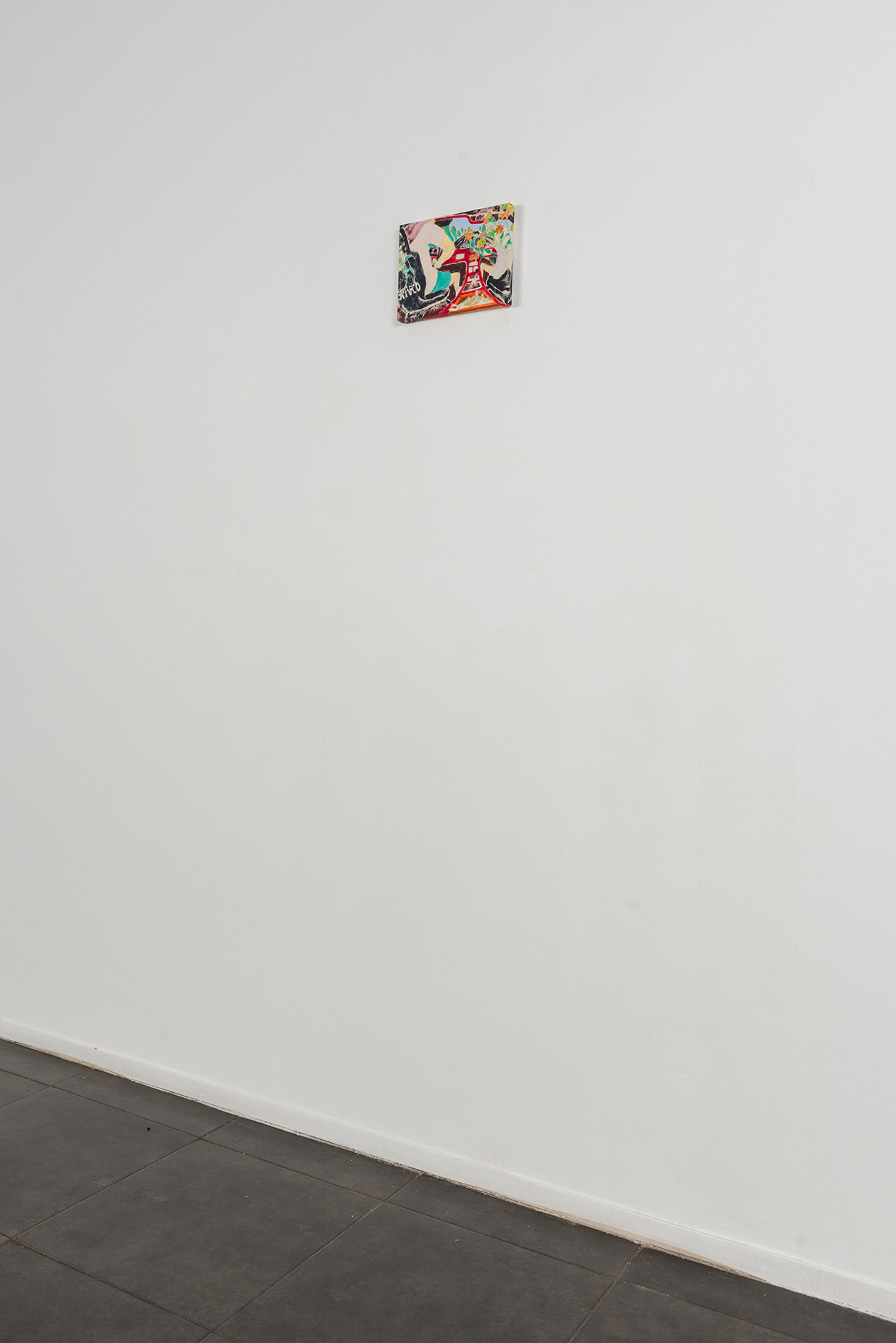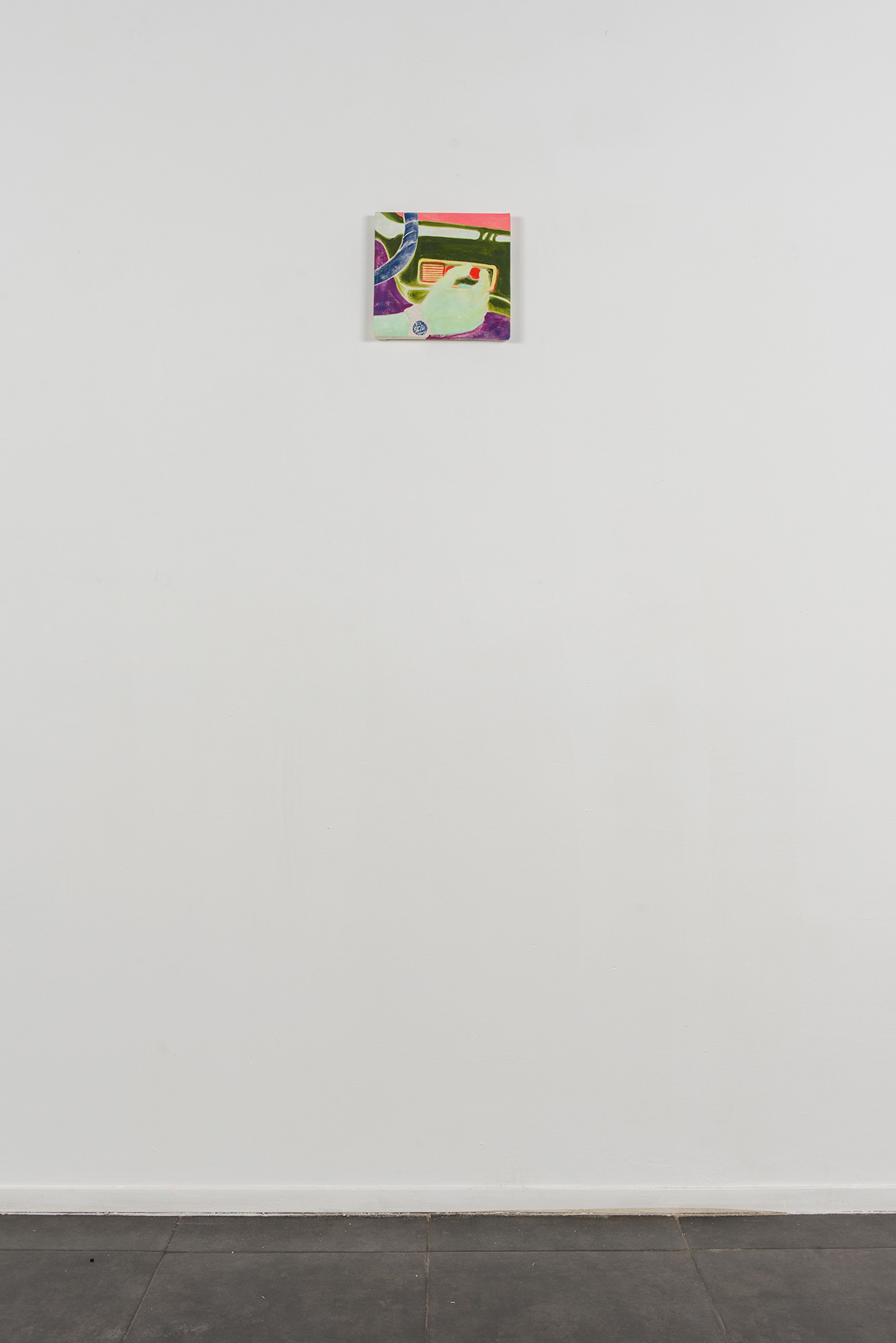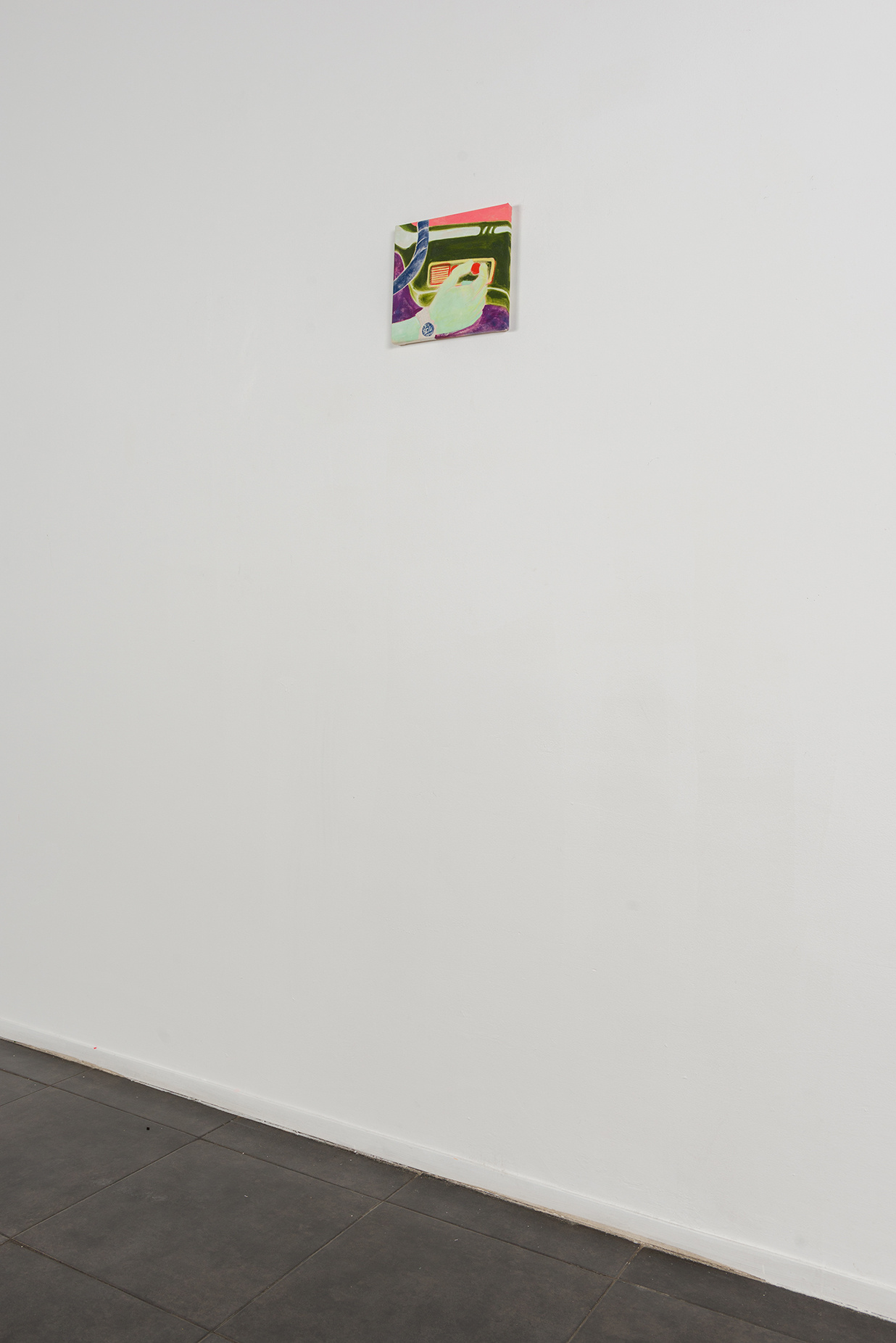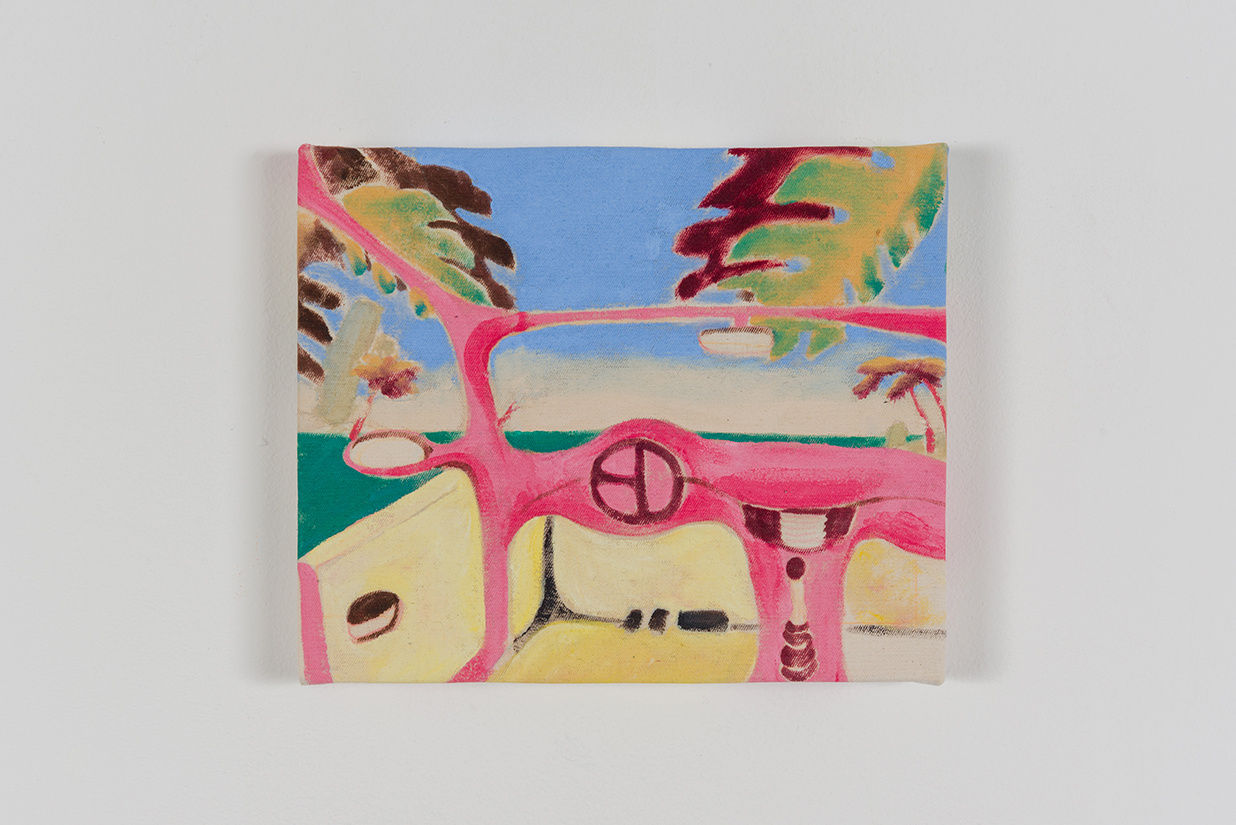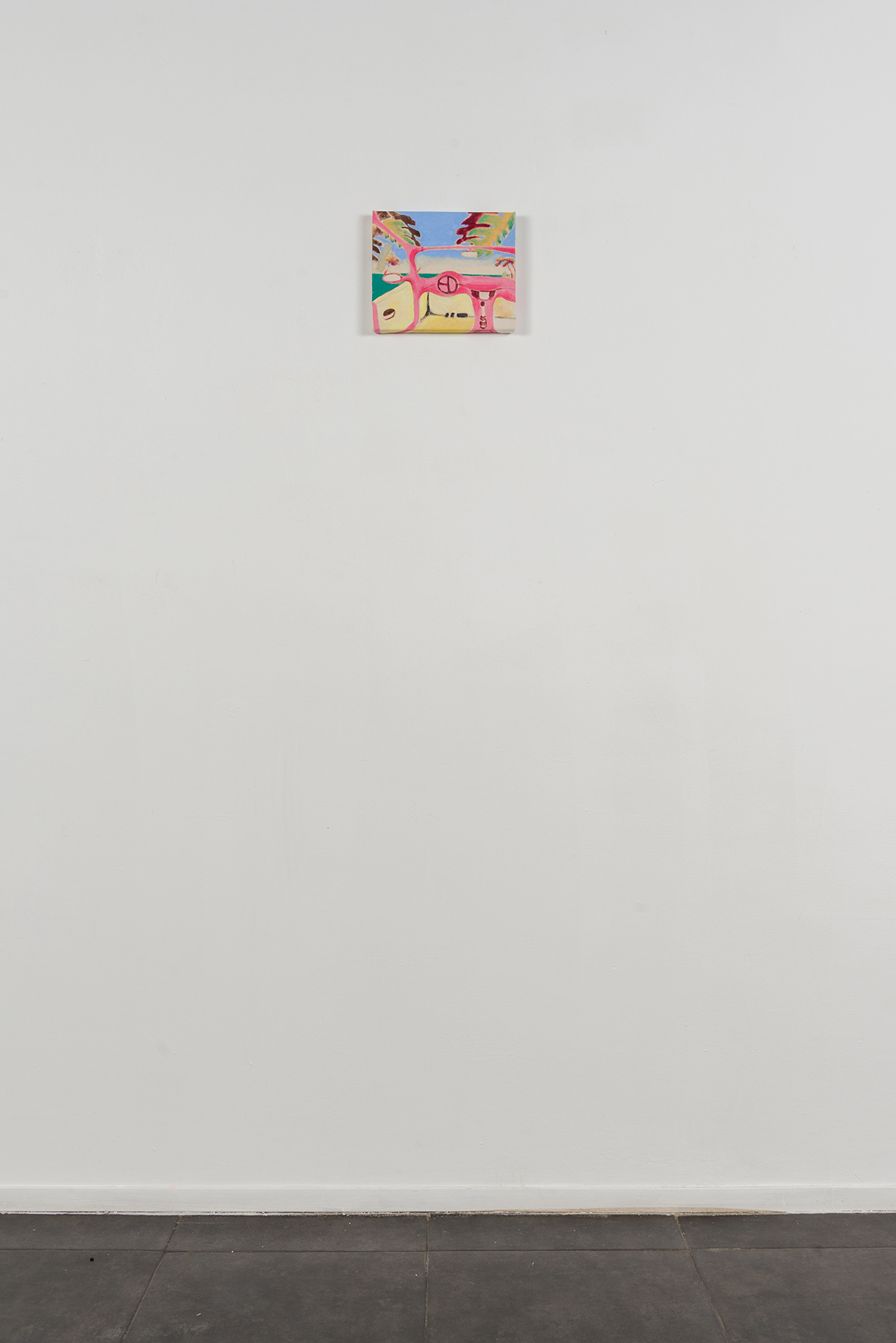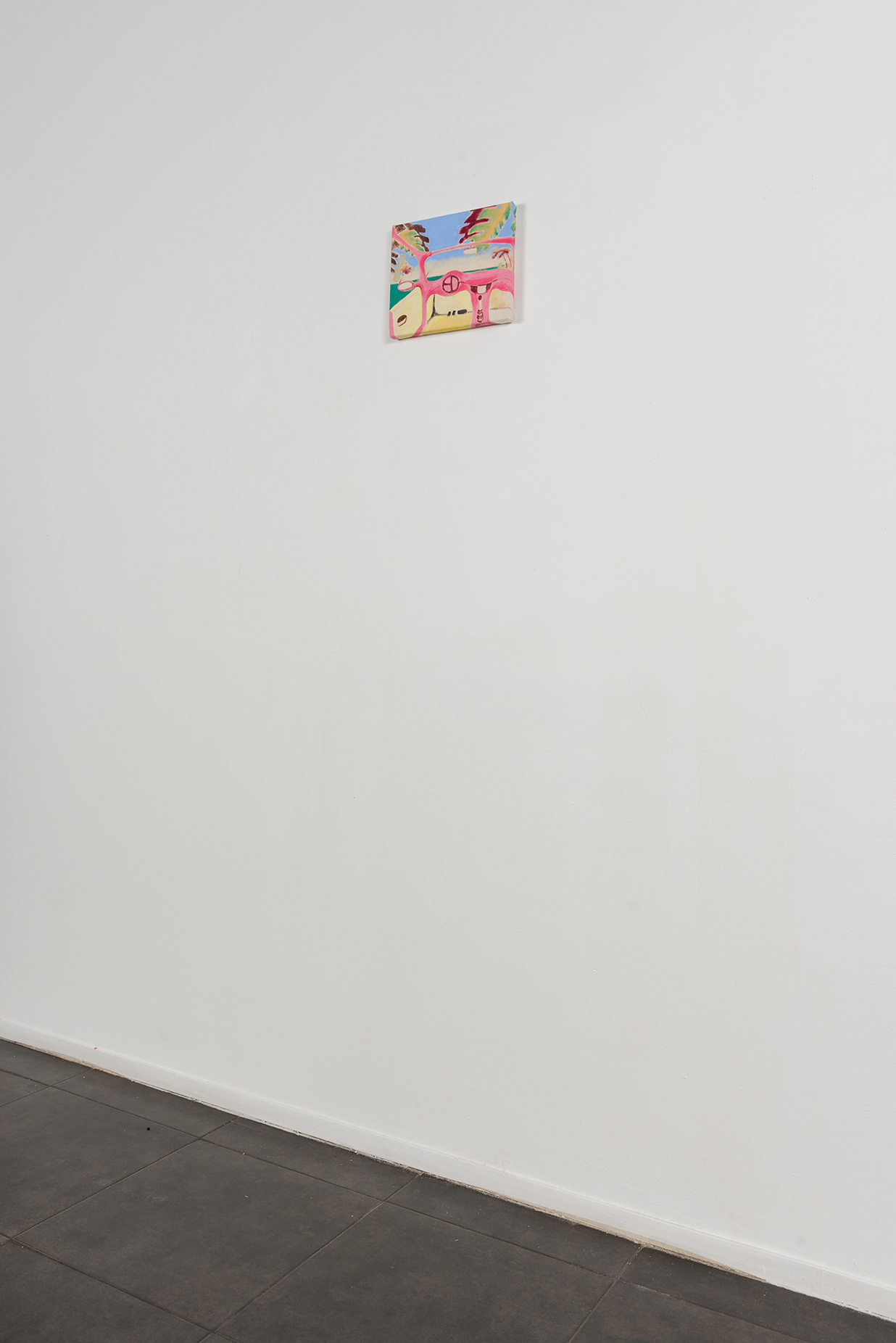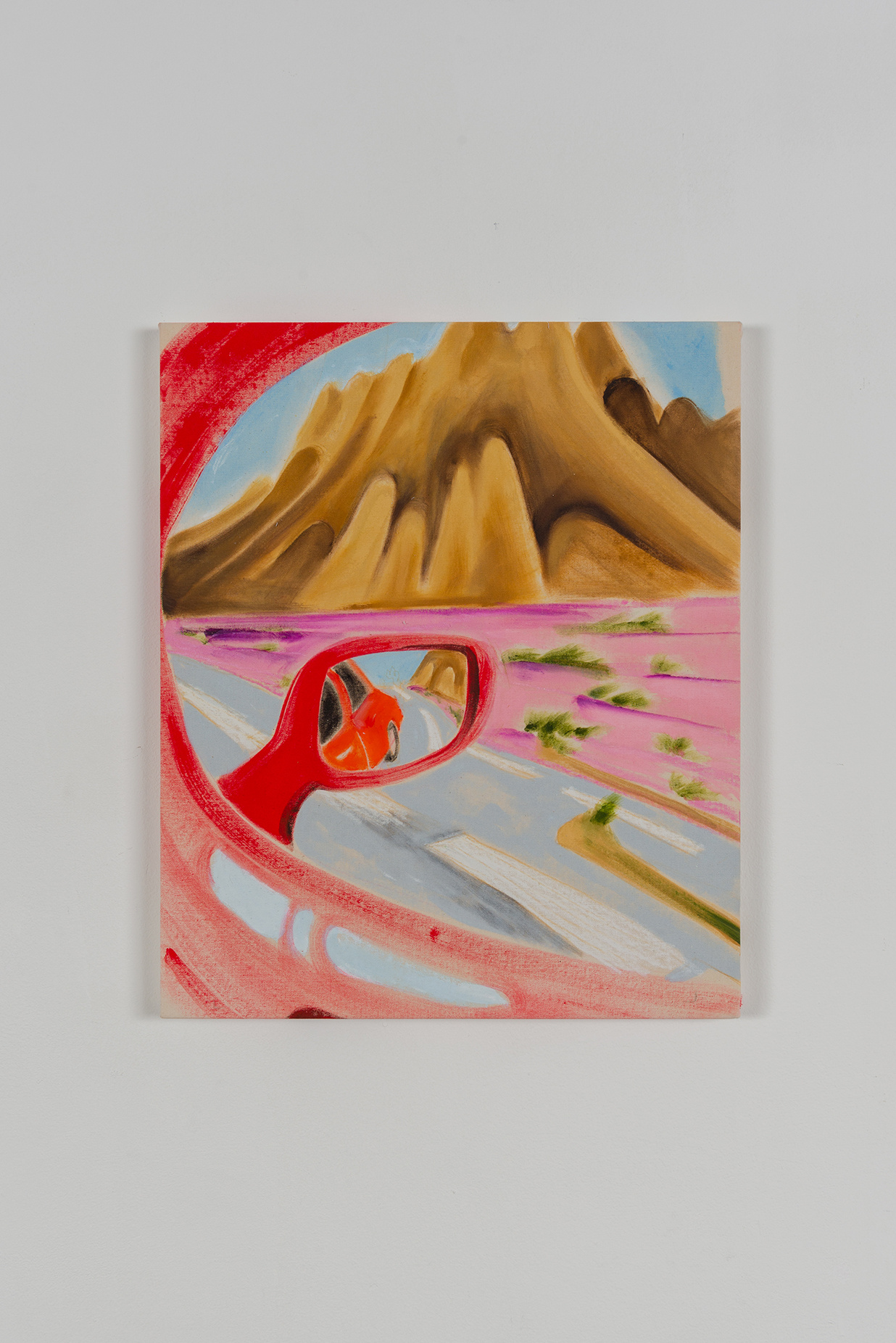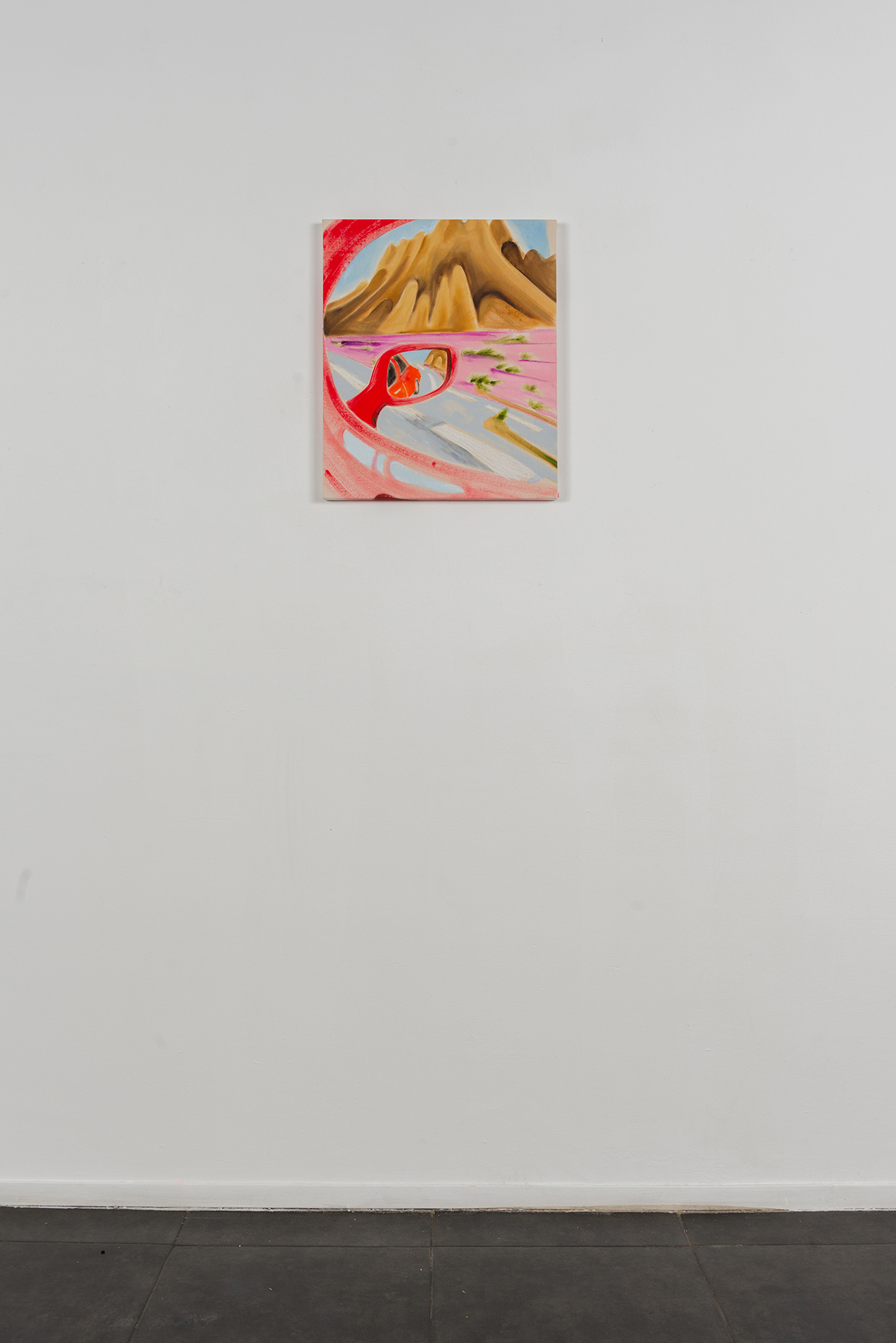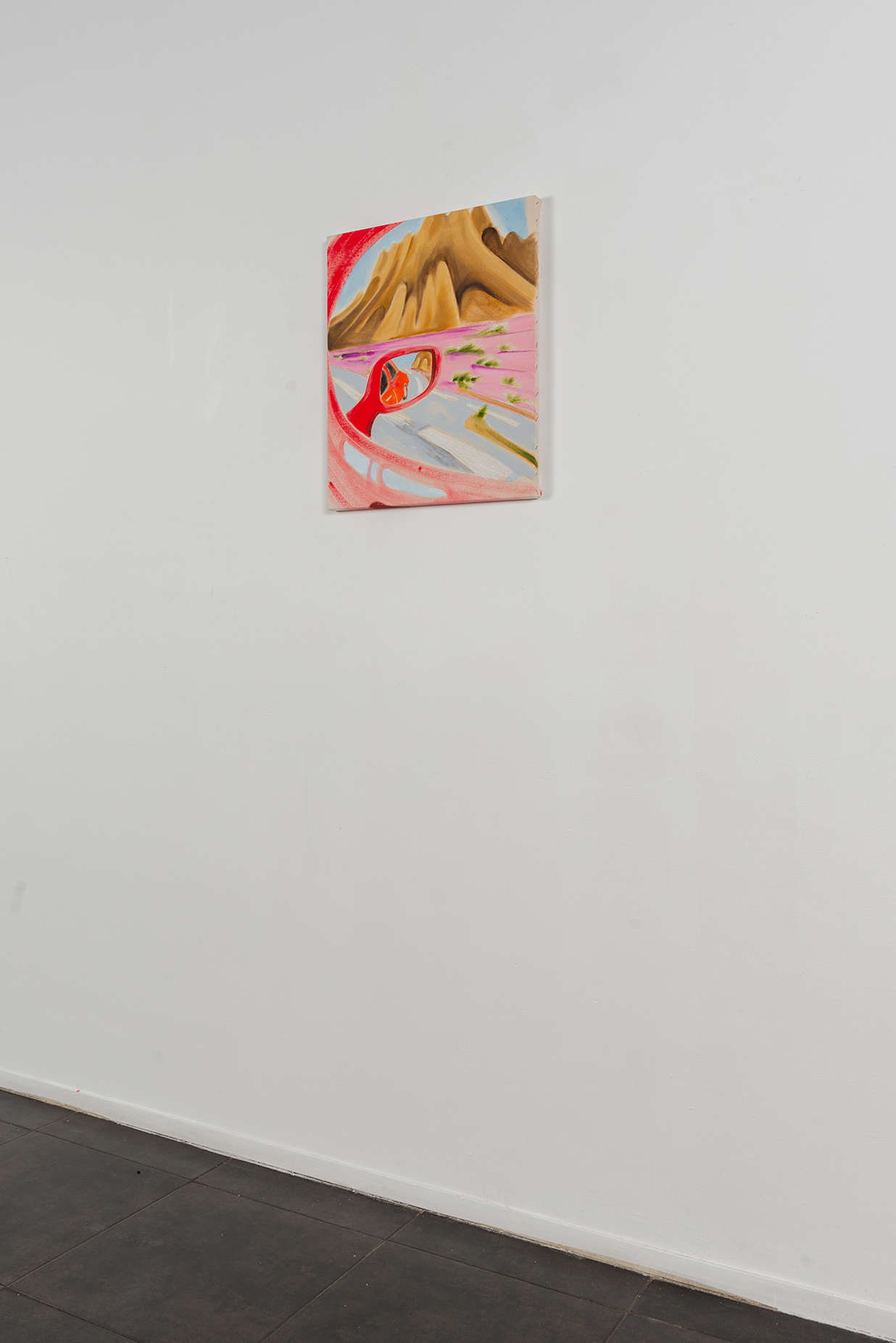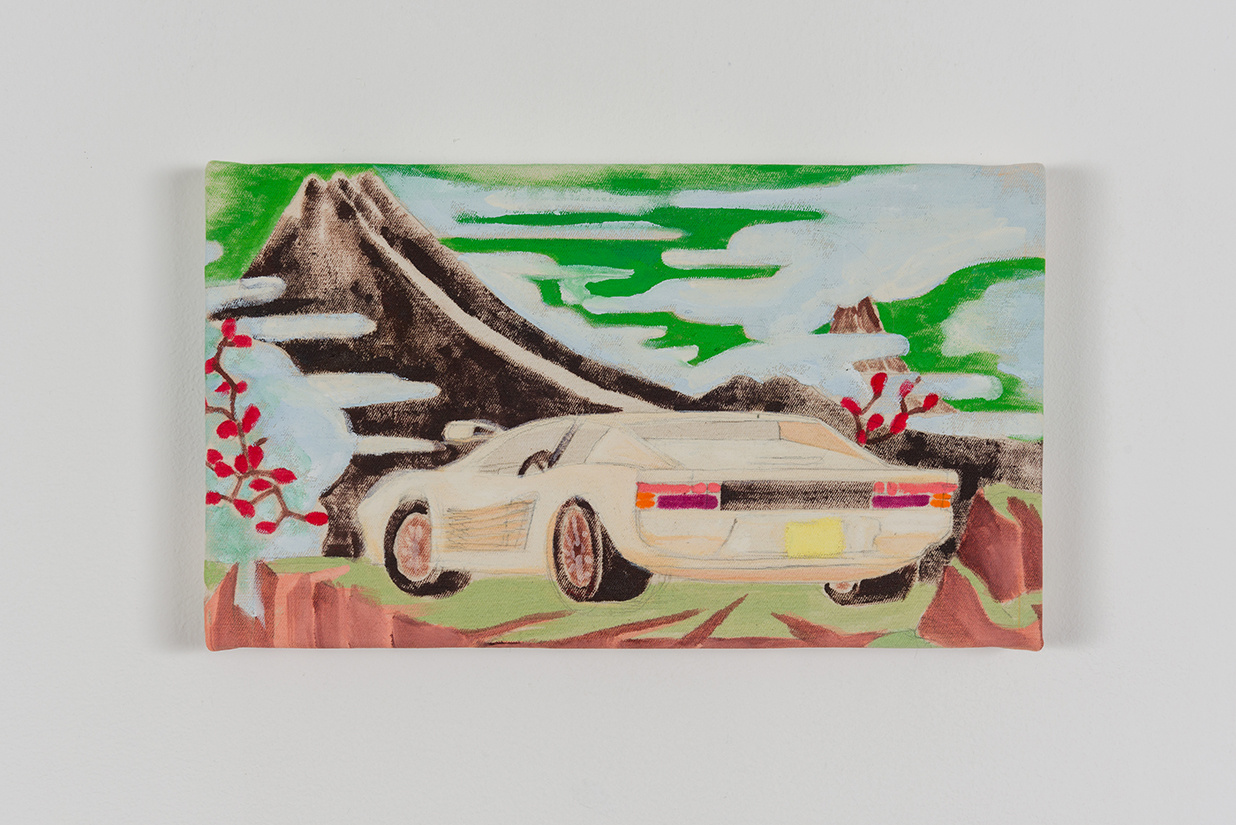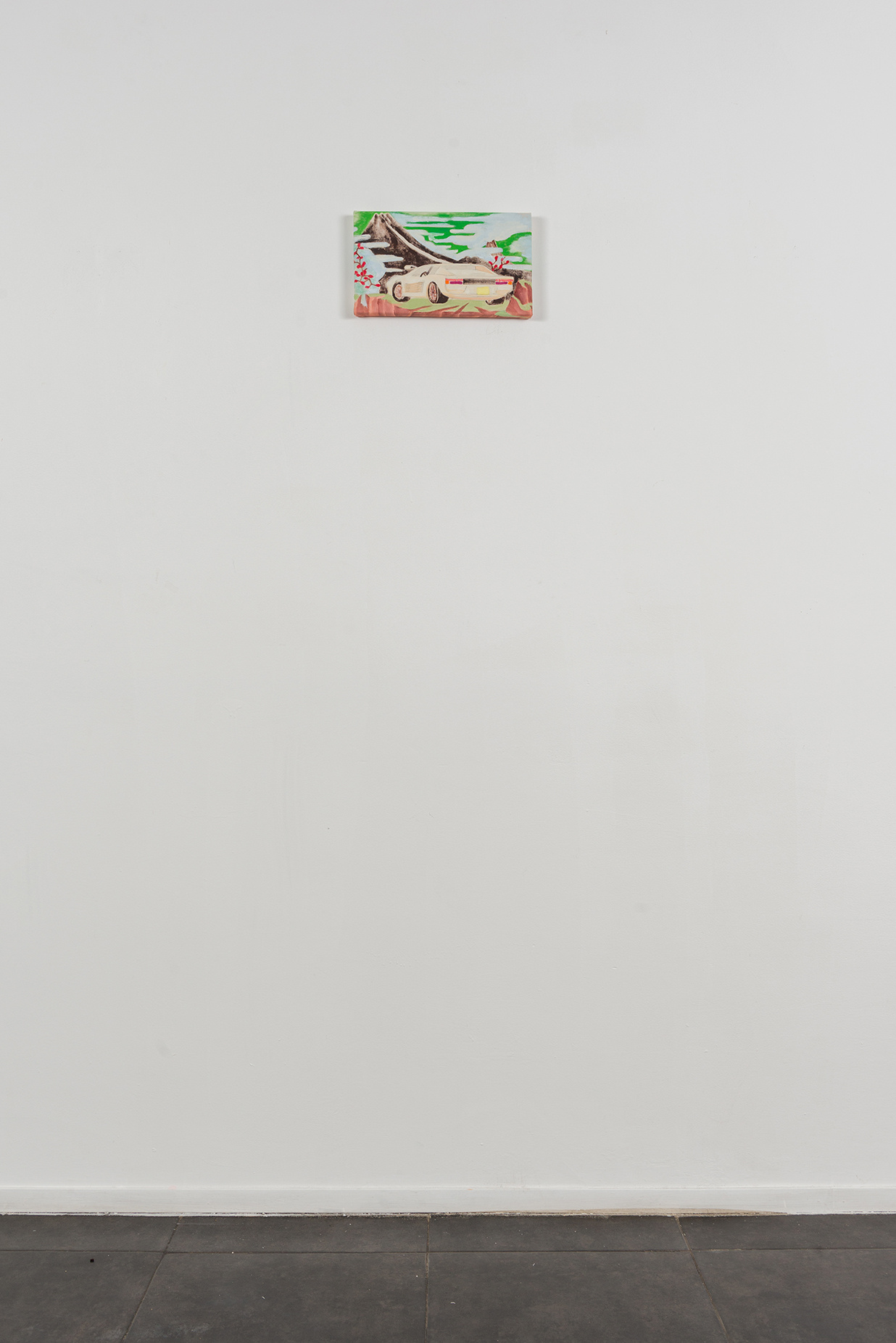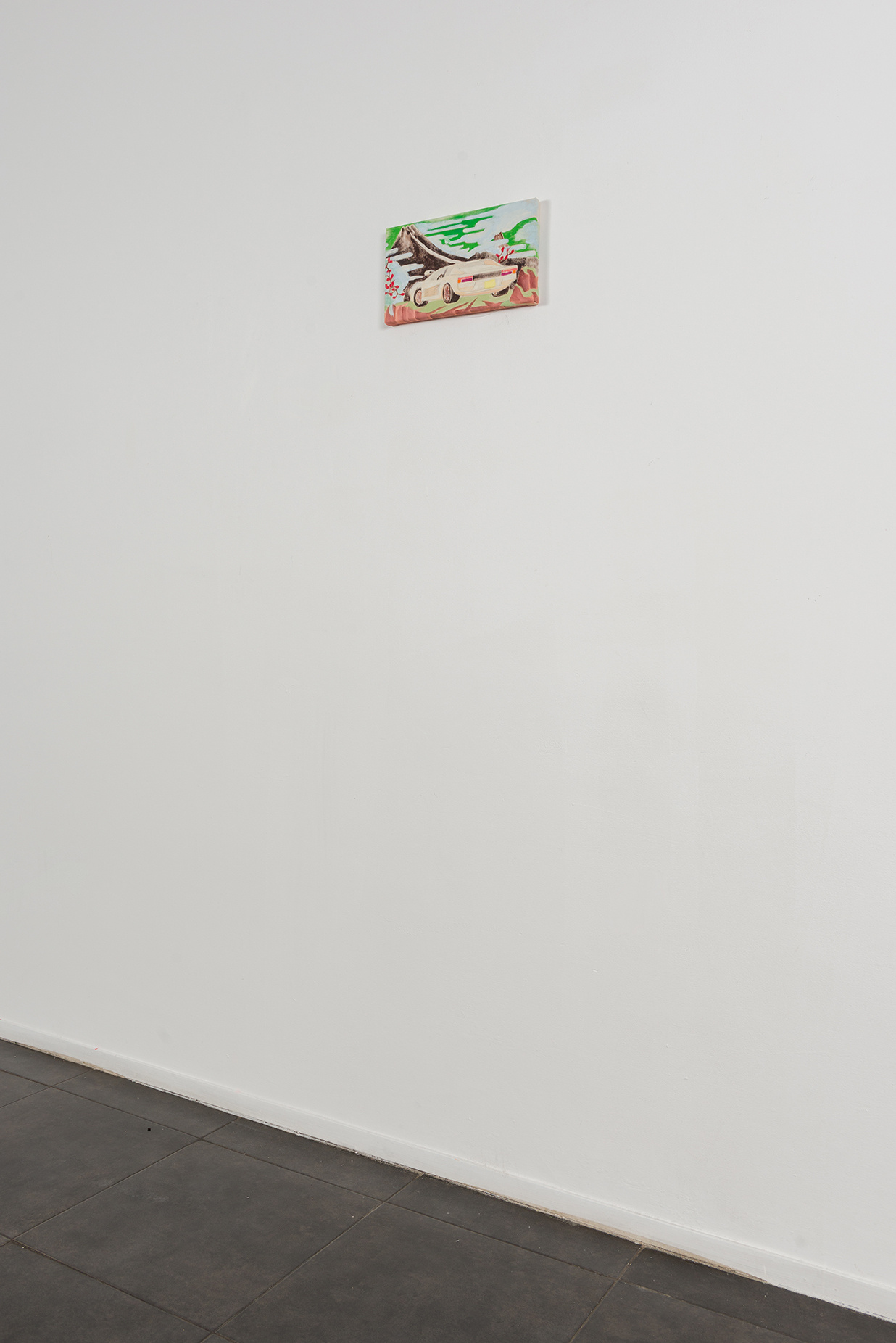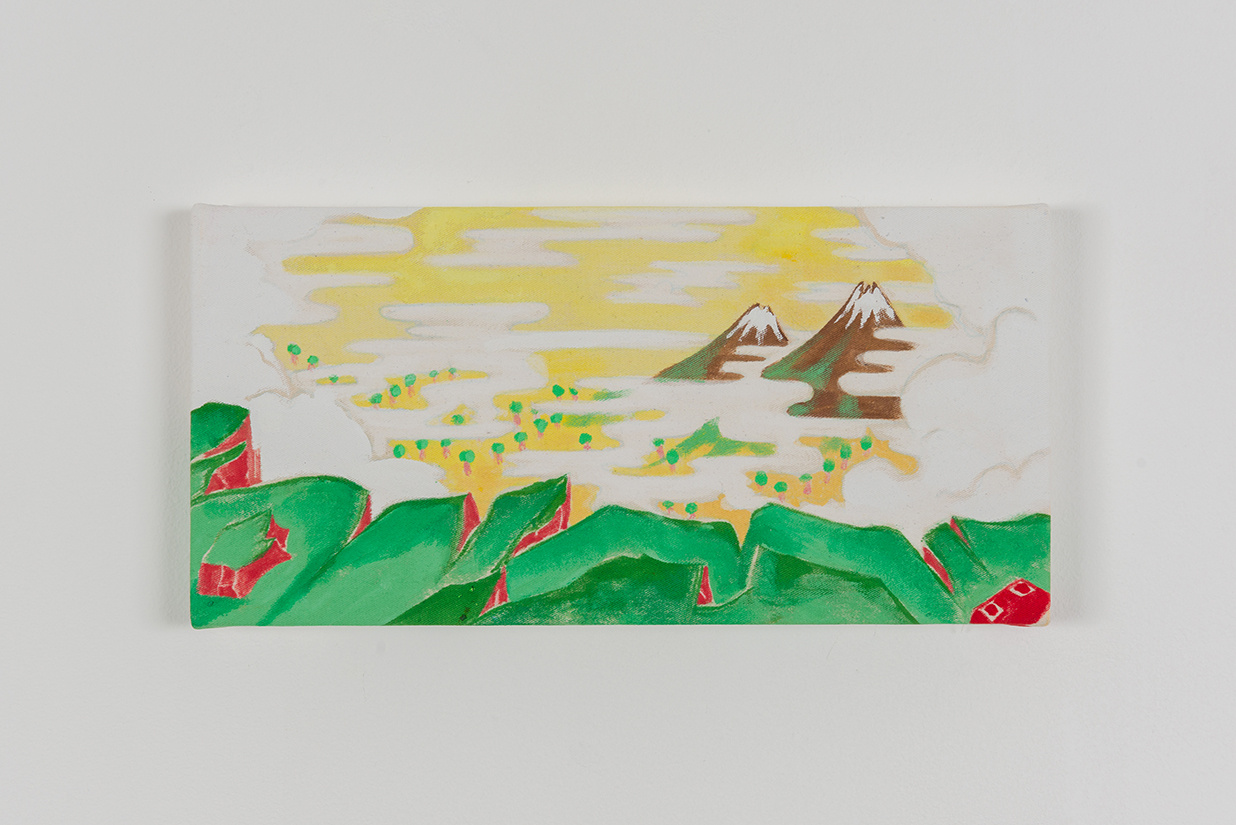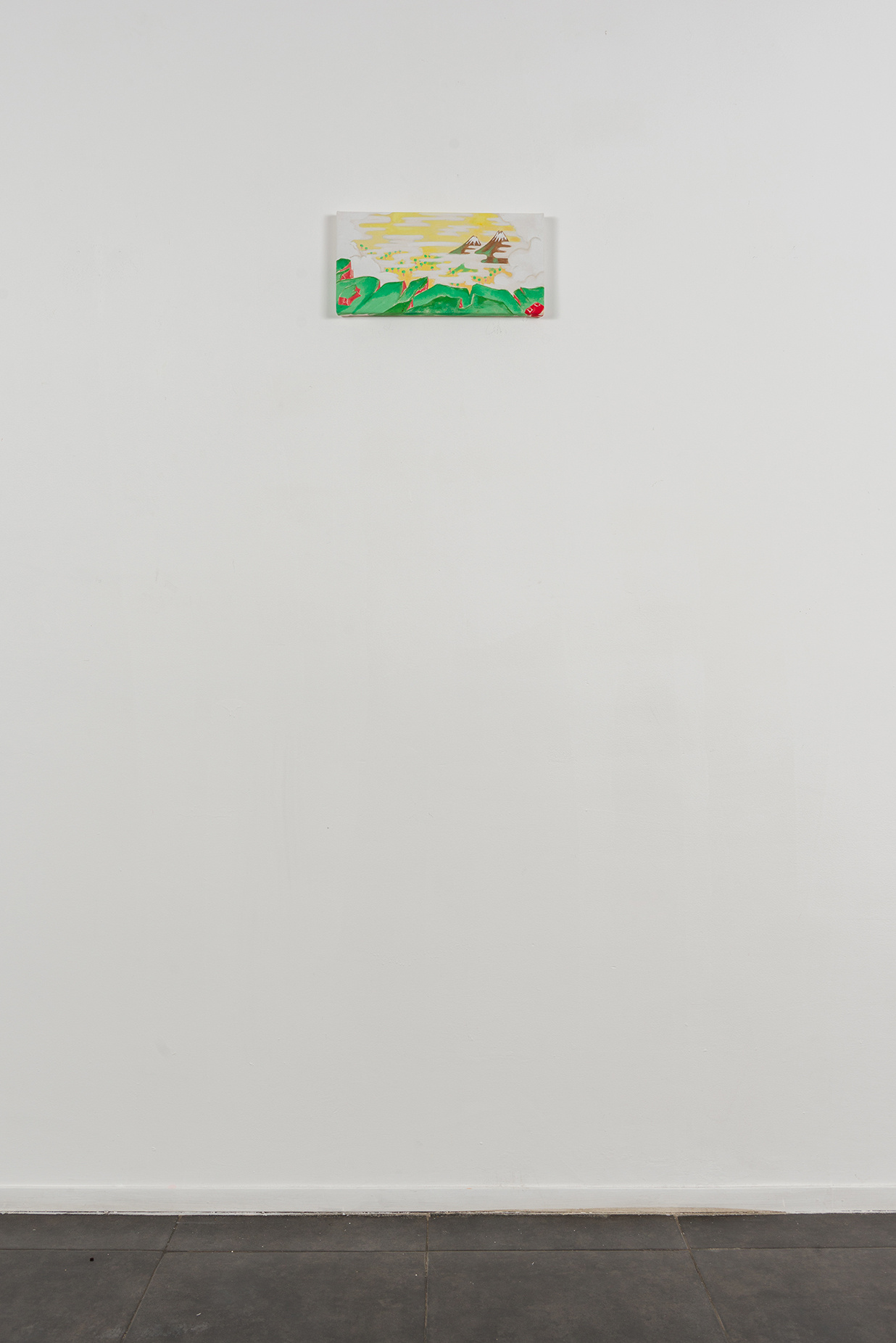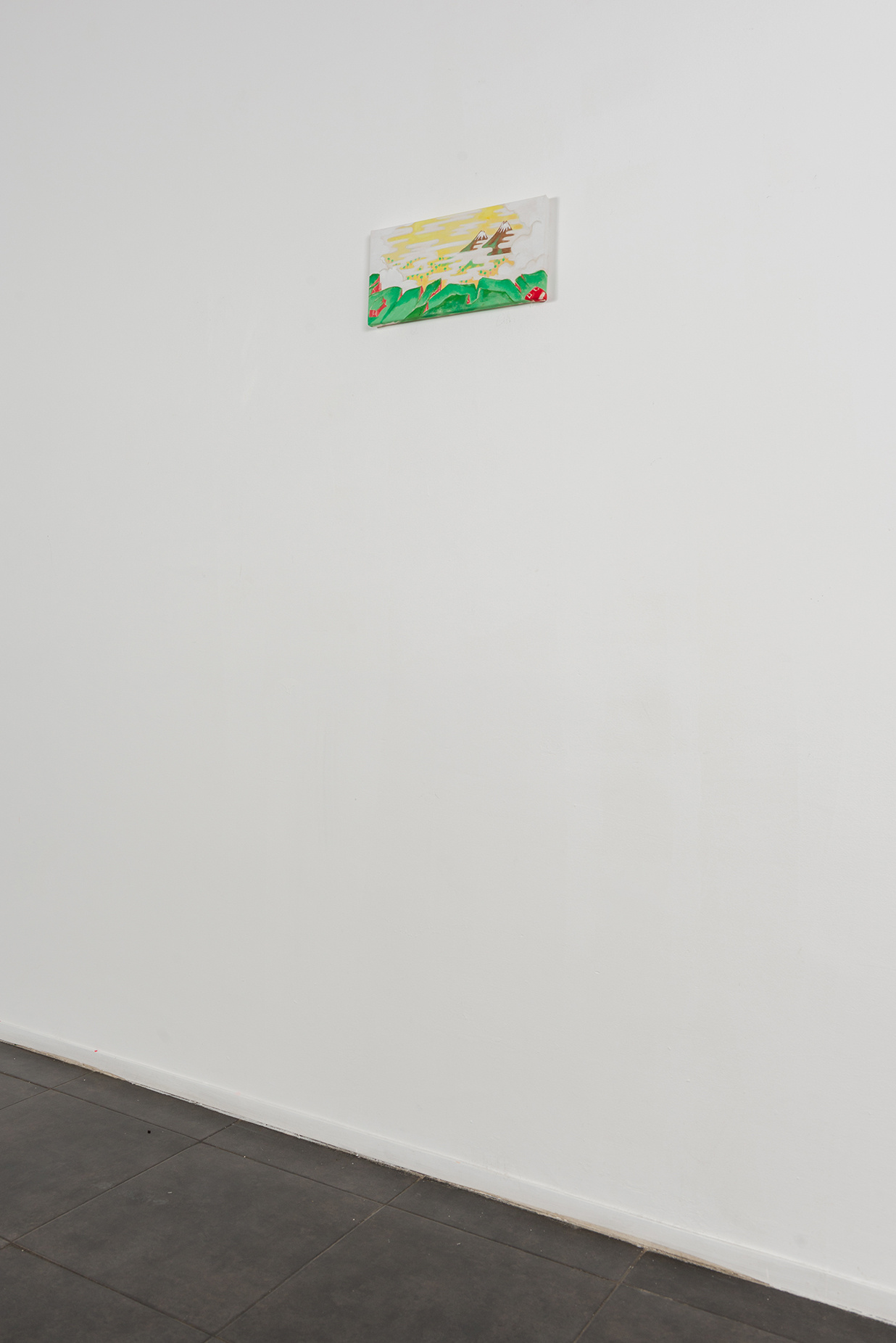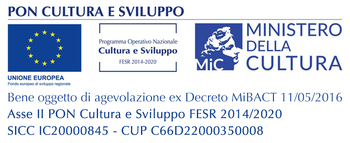Following the example of Reena Spaulings (New York, 2005), Jean-Michel, the artistic duo formed by Sophie Varin (Saint-Doulchard, France, 1993) and Antoine Carbonne (Paris, France, 1987) is at the same time the hand, the artist, and the character. At the very beginning, Sophie and Antoine hid themselves under this “pseudonym”.
Today, they stand more and more their position and set Jean-Michel as an actor, a protagonist of their artworks. He is not a “fake painter” anymore but a genuine fiction character.
The duo conceptualizes their project through stories narrated and shaped in the manner of non-linear adventures. Their stories have the specificity of not being followed as serial episodes, but independent from one another.
For Jean-Michel, each picture appears as an illustration of an imaginary story, a part of the storyboard or a decorative element of the set. To make their exhibitions livelier and to give more materiality to the narration, they complete their compositions with an immersive aspect by creating a decor designed as the continuity of the story.
On the occasion of this solo exhibition in Italy, Jean-Michel proposes a frantic, contemplative, and nostalgic trip – connected to childhood or adolescence – all the way around the asphalted videogames car races recalled from the end of the ‘80s and the first half of the ‘90s. With the famous license Out Run as one of the main backgrounds, Sophie and Antoine make us travel through a road trip inspired by Southern European and Italian landscapes and geometric compositions from pixelated sequences from the golden age of retrogaming.
They invite the spectators to immerse themselves within synthetic landscapes, referring to the videogames, and dialogue with art history: like impressionists and fauvists, they simplify their language, and they use color as an element of perception which also refers to the art technical constraints of the time and to the lack of space on the table for the videogame’s cartridges.
The character, the main actor, becomes a first-person avatar. He evokes emotions and invites us to follow him through an itinerary, to travel the map of a fantasied universe.
Live at a brisk pace or stop quietly to admire the landscape: it is under a contrasted aspect, oscillating between speed and contemplation, that Sophie and Antoine take us aboard their Testarossa.
With an in-situ dimension, they reclaim the spaces of S2 of the Solito Galleries and create a project that goes hand in hand with the exhibition space architecture and the purposely created narrative. A fictive horizon line and a meditative landscape wherein the images, such as print screens, are coming to fit in.
Push on the button Start: Vroom Vroom, Skreeek, Player 1, Settings, Select… The journey can begin. (VVB)
Out Run can mean going faster than whoever tries to follow you. It makes us think of fleeing, running away from something but also from ourselves. Jean-Michel is an adventurous being but he can also lack courage sometimes. He is reckless and free, but doesn’t like confrontation. Looking to outrun who knows who, he might just be getting ahead of himself. Jean-Michel is most happy with his nose up in the air, hair in the wind, listening to his favorite playlist while the sun sets on the road. Yet there is a certain melancholy in this relaxed moment. The viewer can enjoy Jean-Michel’s journey and the landscapes he crosses. He or she is put in his skin through first person P.O.V. paintings. The aim of this trip is unclear, with only the horizon as a recurrent target. Out Run focuses more on a drifting journey than a conclusive destination.
Videogame-inspired art like Michel Majerus’s or Albert Oehlen’s is often an ode to the digital and the playful. We try to go back to analog, leaving the digital part but keeping the playfulness. To the question “do you think life is some sort of videogame?”, Jean-Michel answers yes. It is a caprice.
There seems to be a life of its own within the game but nothing is really activated until you – as a character – interact with anything. Everything is available. Every offline game is an ode to individuality, and Out Run is archetypal of that kind of videogames. You see other cars, rocks and obstacles, but really the map is a maze in which you need to know every turn in order to be efficient. The further you go, the more landscapes you come across. Coming from Venice Beach, you drive across a Mayan temple, all the way to the African savanna. In the end those visuals act as a distraction. As much as you want to enjoy them, you need to focus on the road.
With the exhibition Out Run, Jean-Michel wants to reenact these references and this state of mind. They autonomize them from the original game by creating links to a more classical history of painting, and in particular, to the quest of the hermit. Beyond videogame, Out Run is a reminiscence of a time when life was more linear and, while there were less crossroads and turning points, it was not simpler. (J-M)
Read less
Following the example of Reena Spaulings (New York, 2005), Jean-Michel, the artistic duo formed by Sophie Varin (Saint-Doulchard, France, 1993) and Antoine Carbonne (Paris, France, 1987) is at the same time the hand, the artist, and the character. At the very beginning, Sophie and Antoine hid themselves under this “pseudonym”.
Today, they stand more and more their position and set Jean-Michel as an actor, a protagonist of their artworks. He is not a “fake painter” anymore but a genuine fiction character.
The duo conceptualizes their project through stories narrated and shaped in the manner of non-linear adventures. Their stories have the specificity of not being followed as serial episodes, but independent from one another.
For Jean-Michel, each picture appears as an illustration of an imaginary story, a part of the storyboard or a decorative element of the set. To make their exhibitions livelier and to give more materiality to the narration, they complete...
Read more
